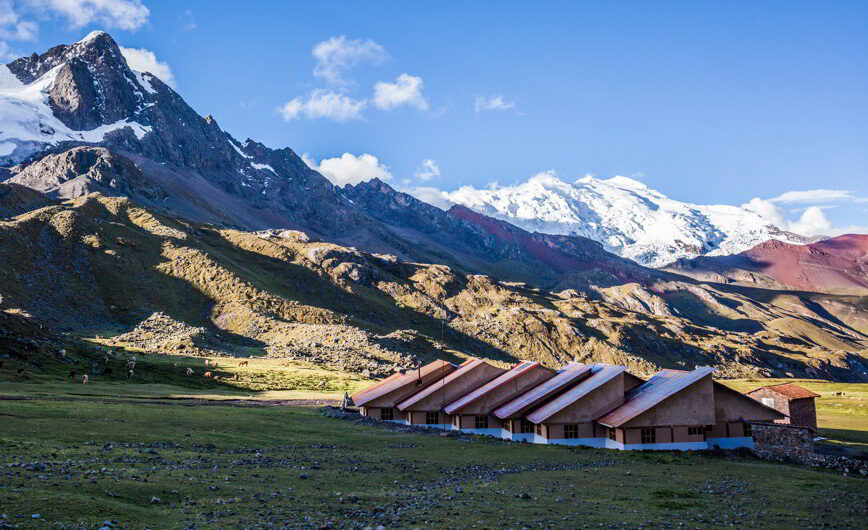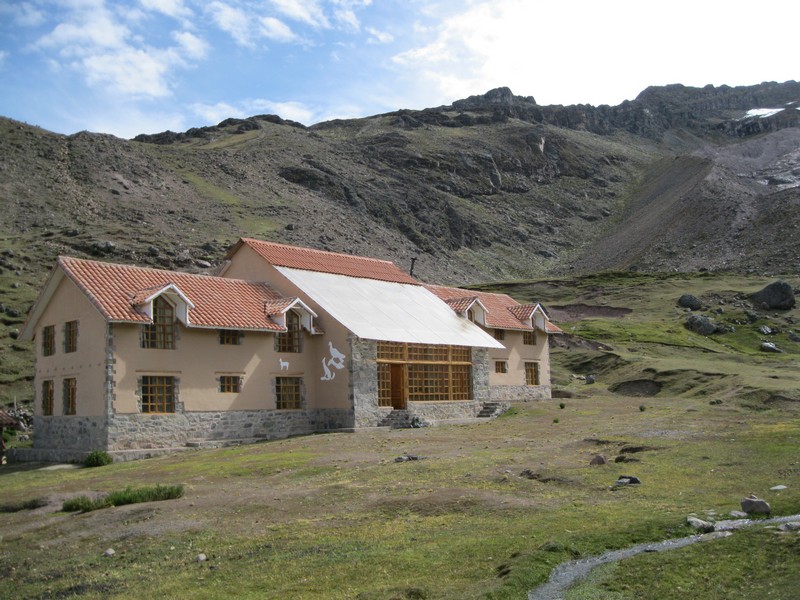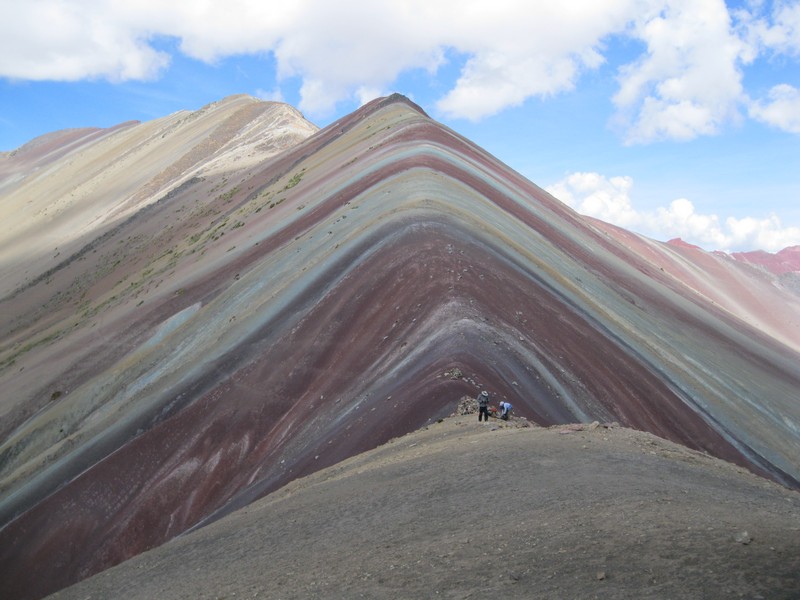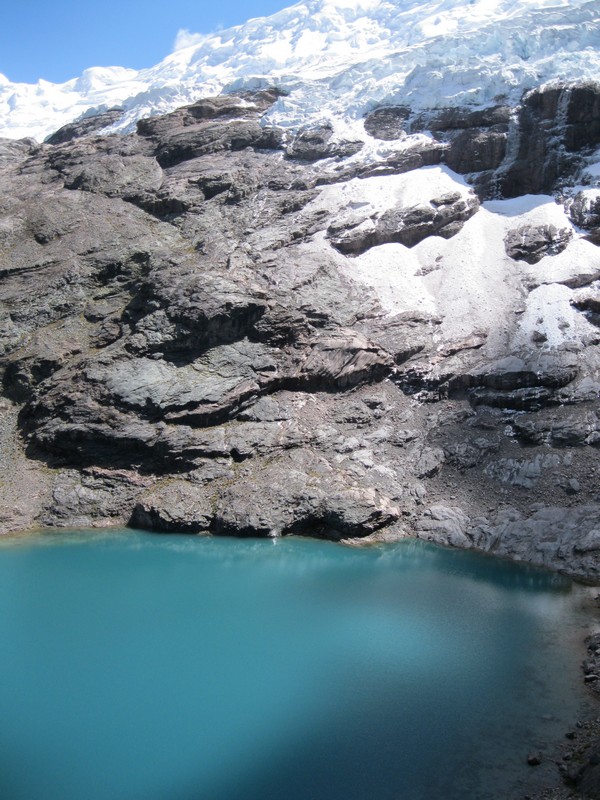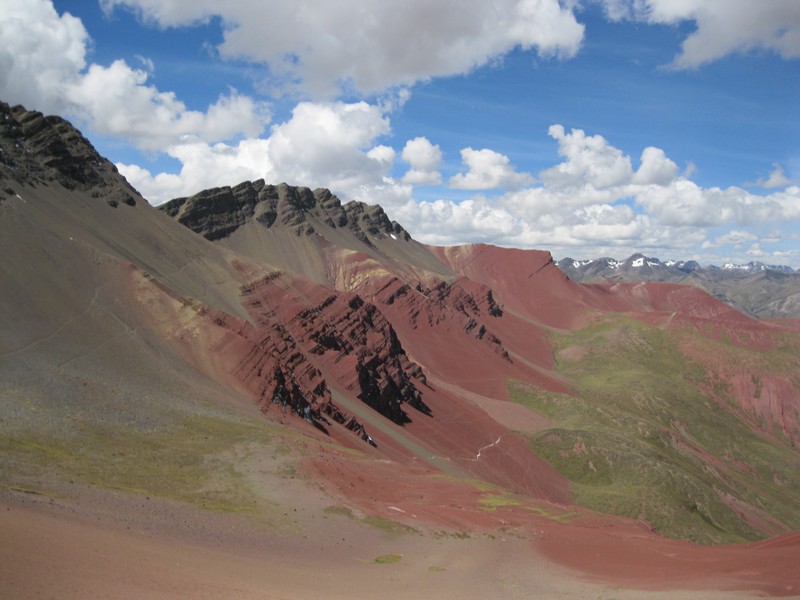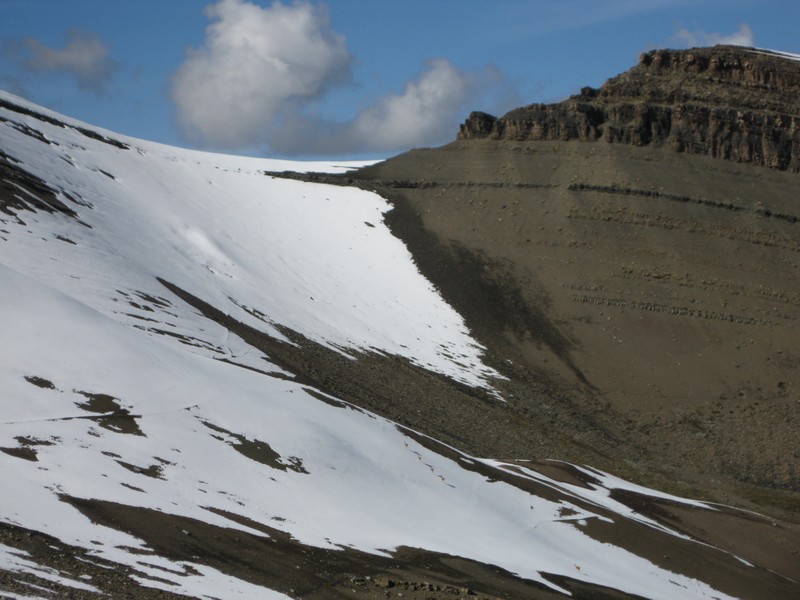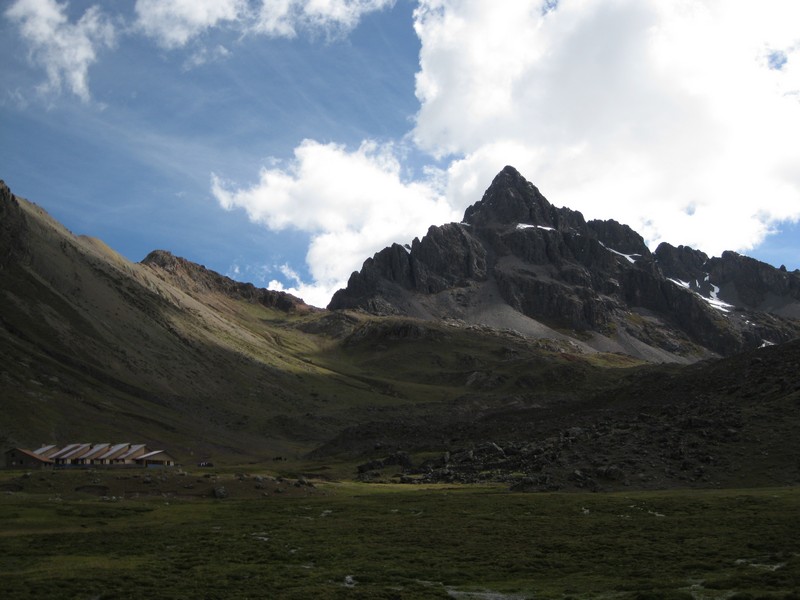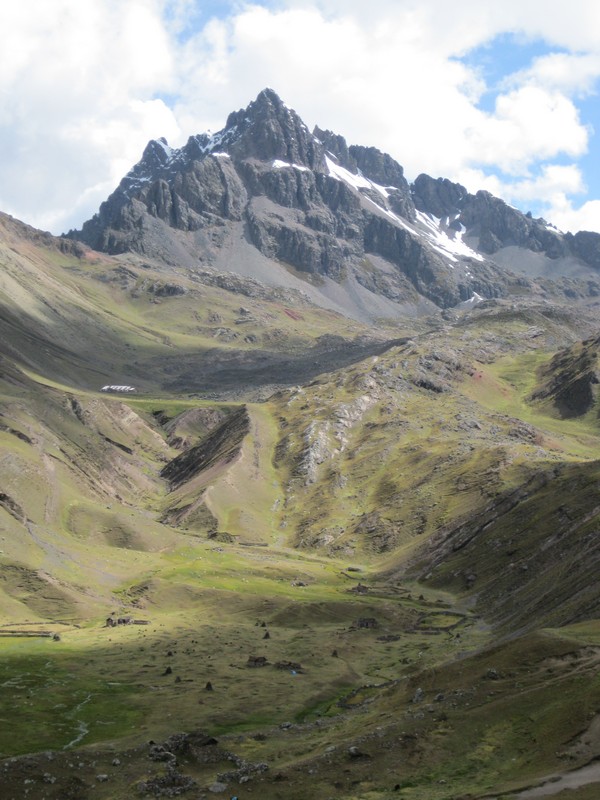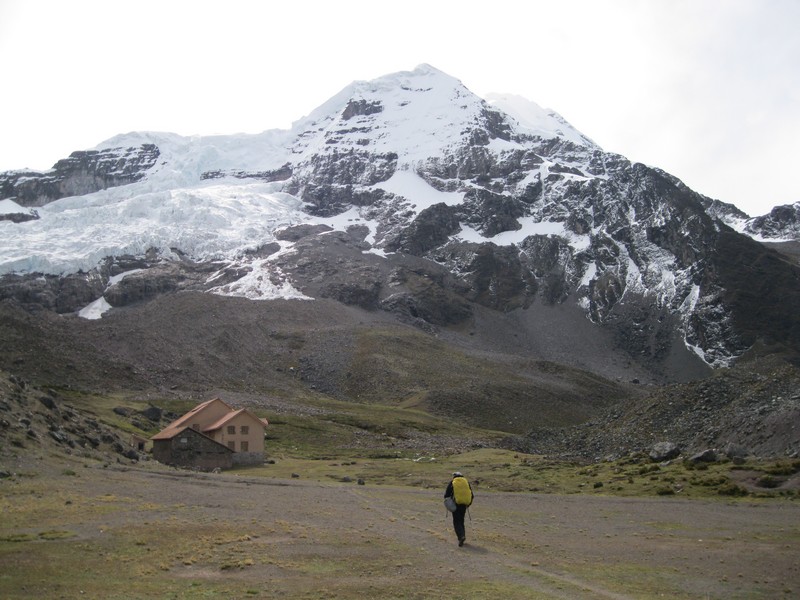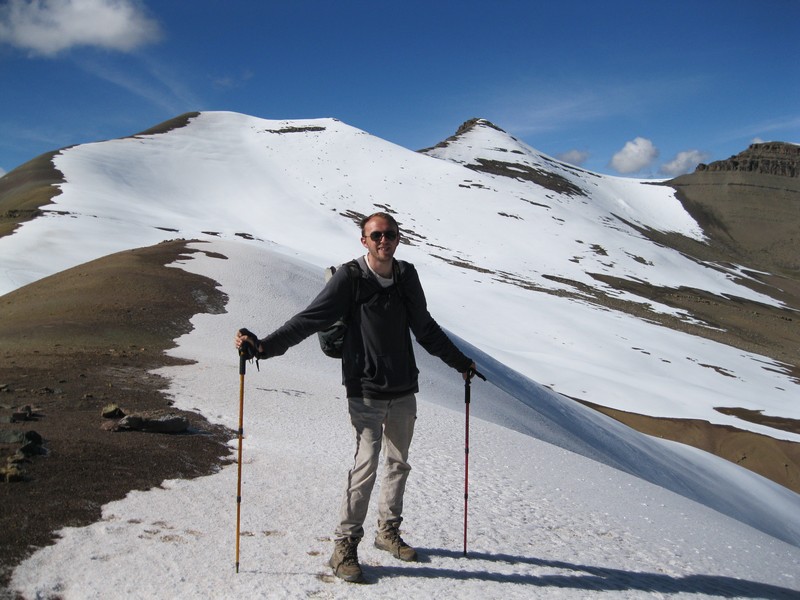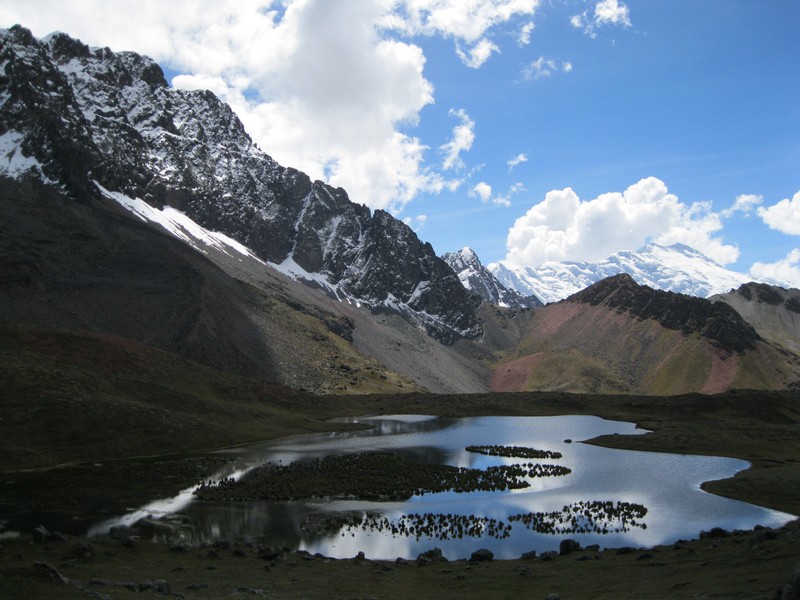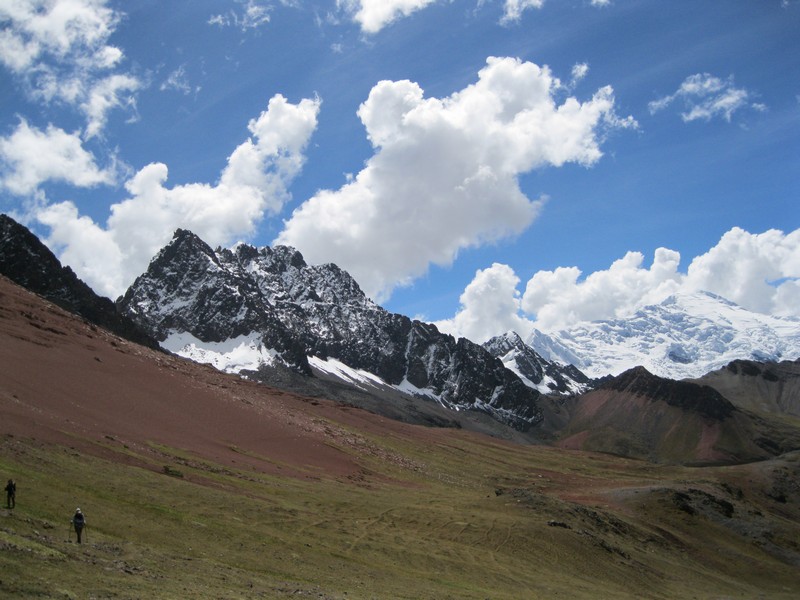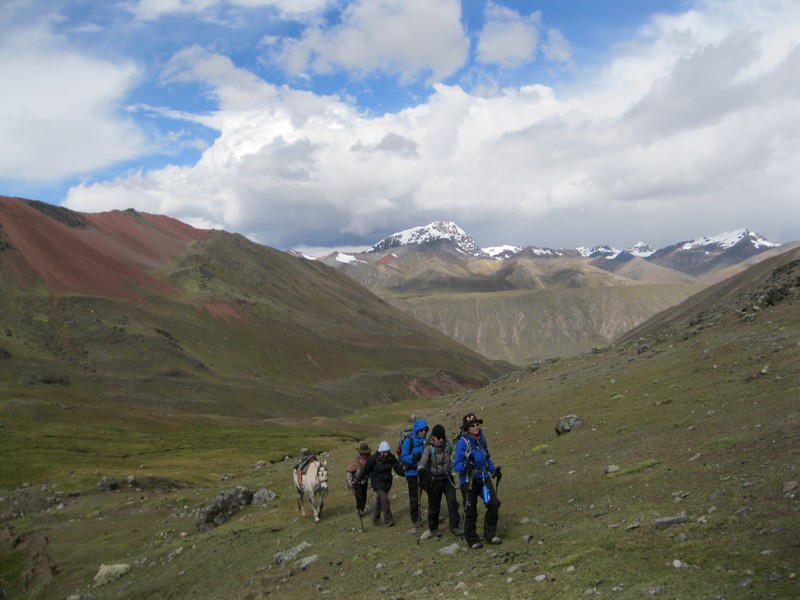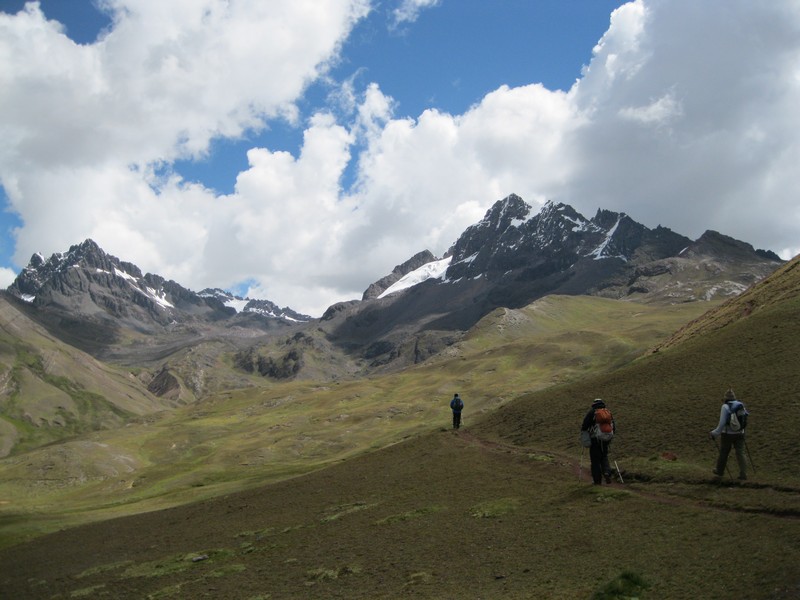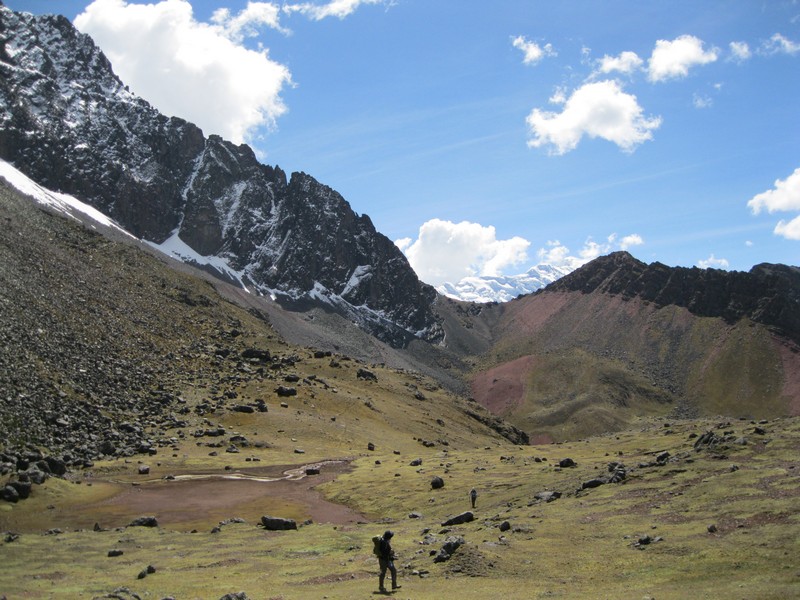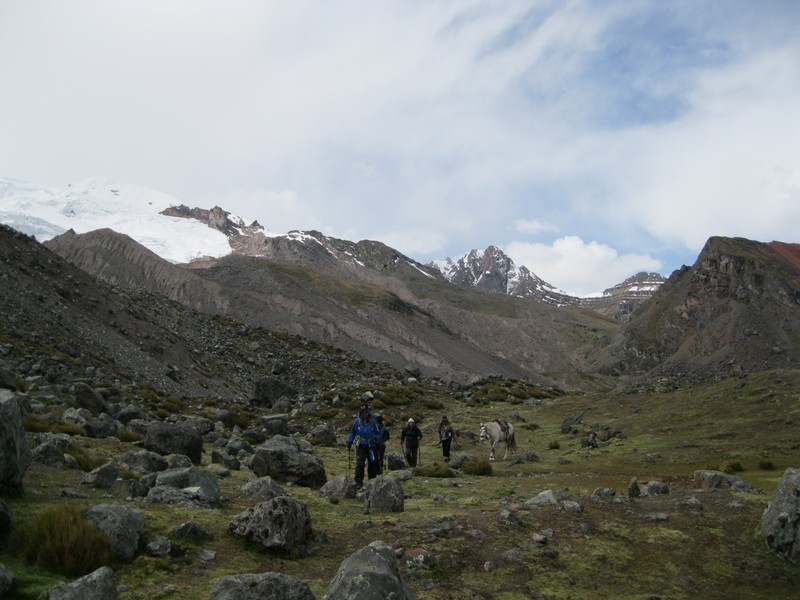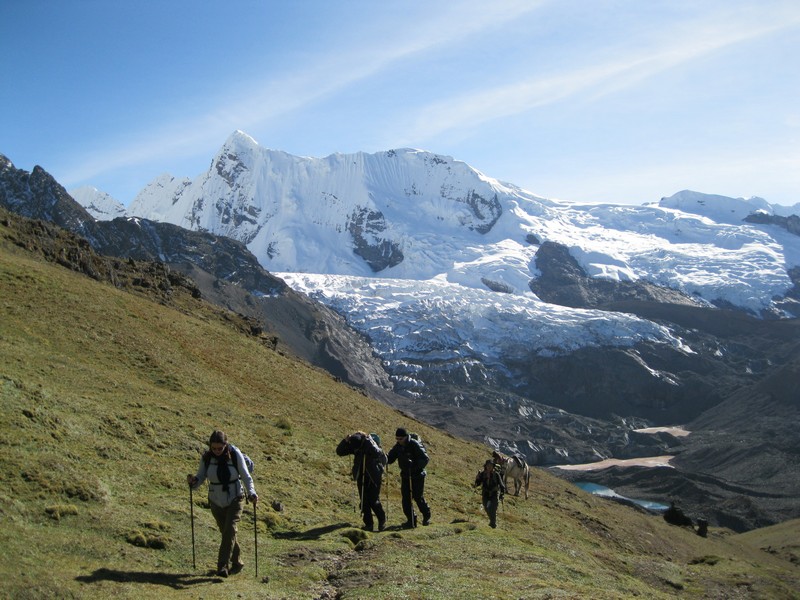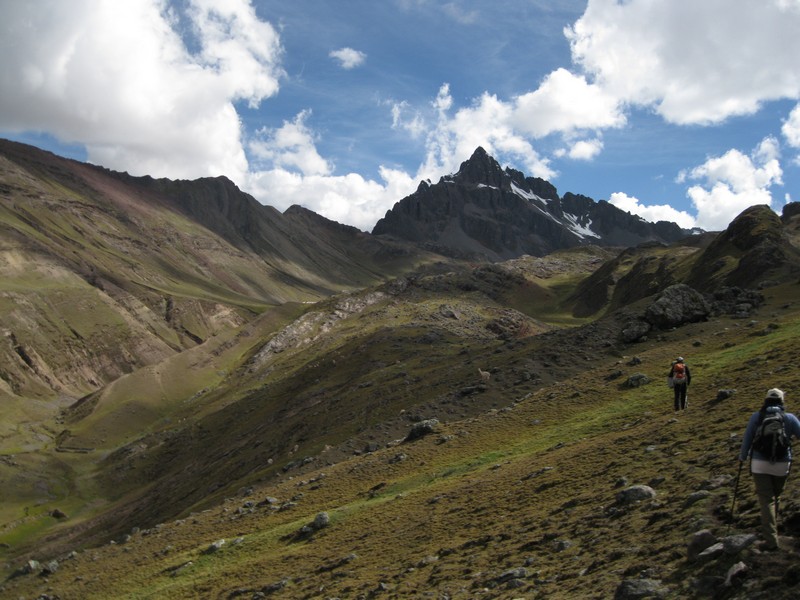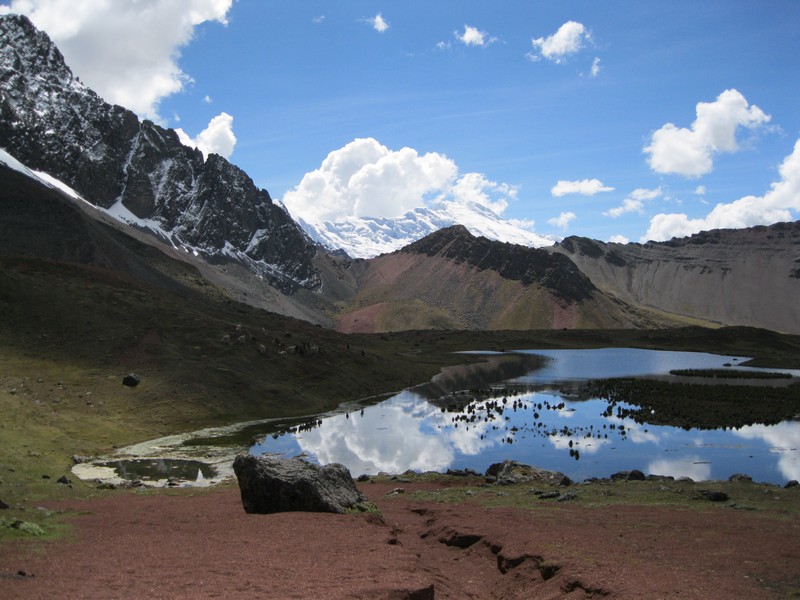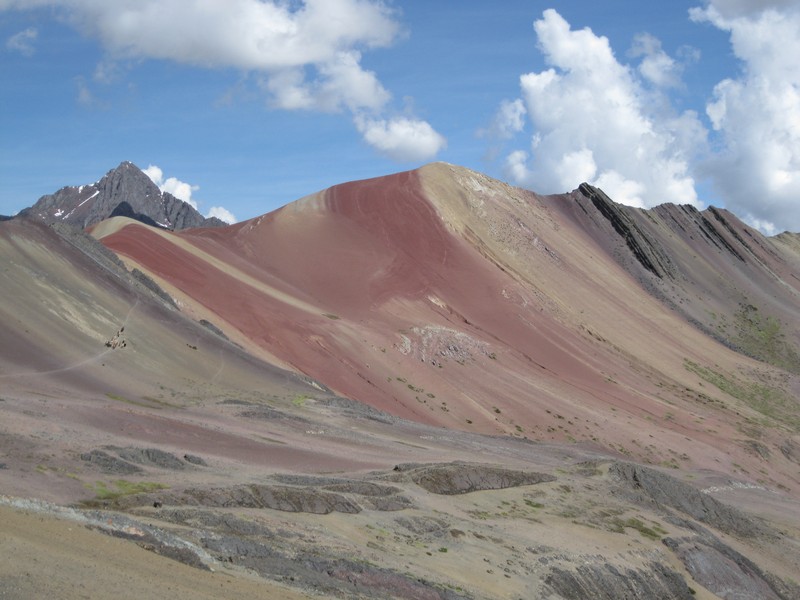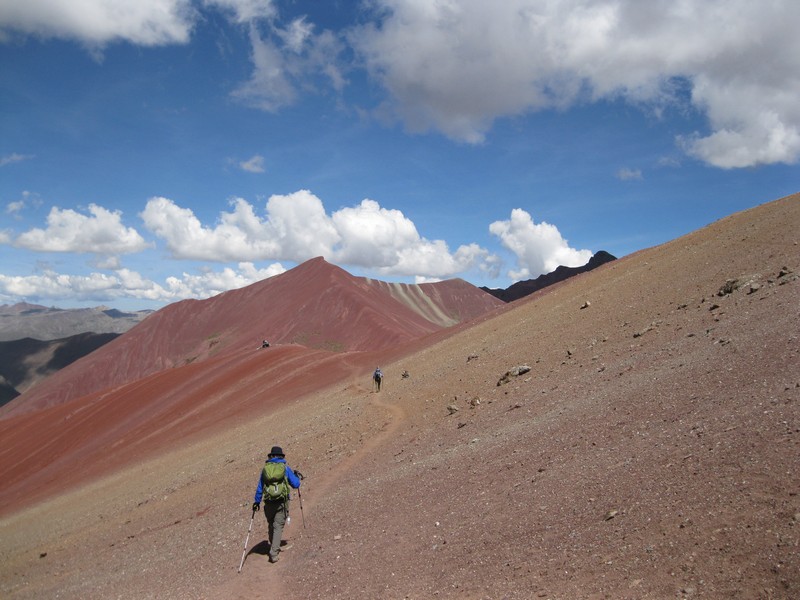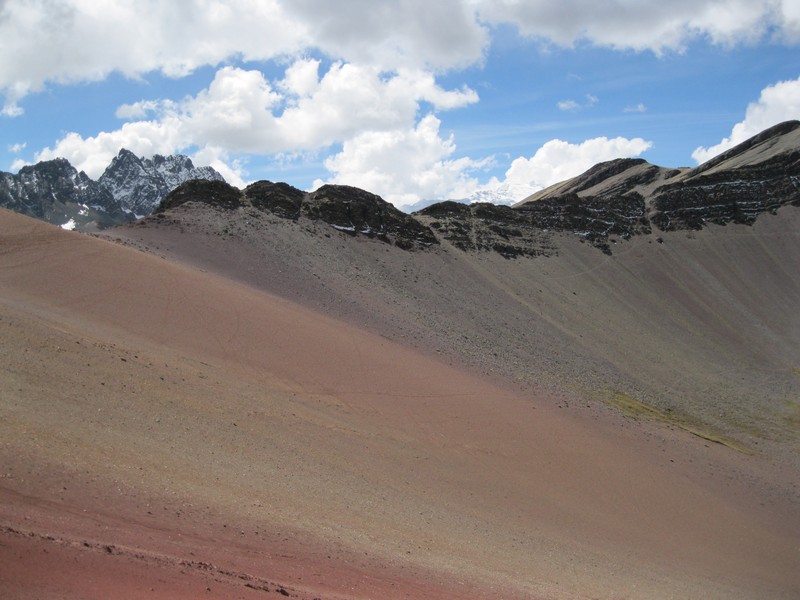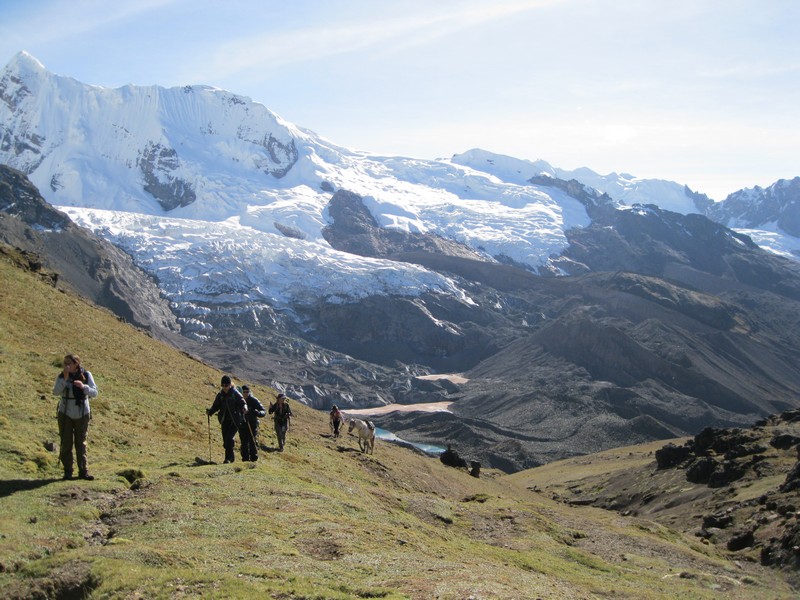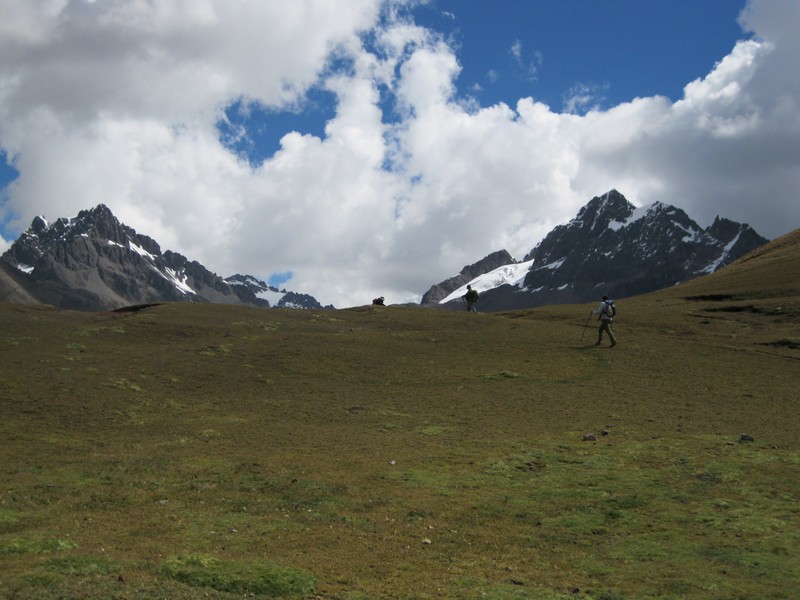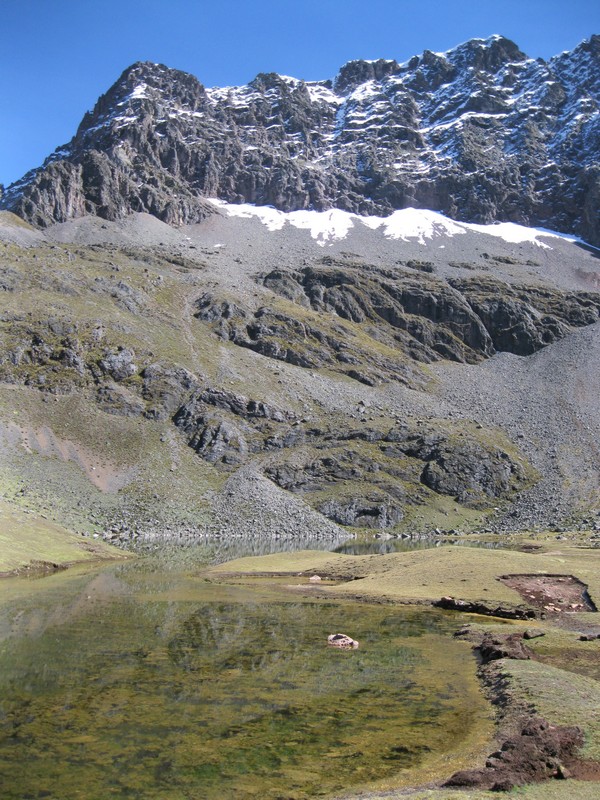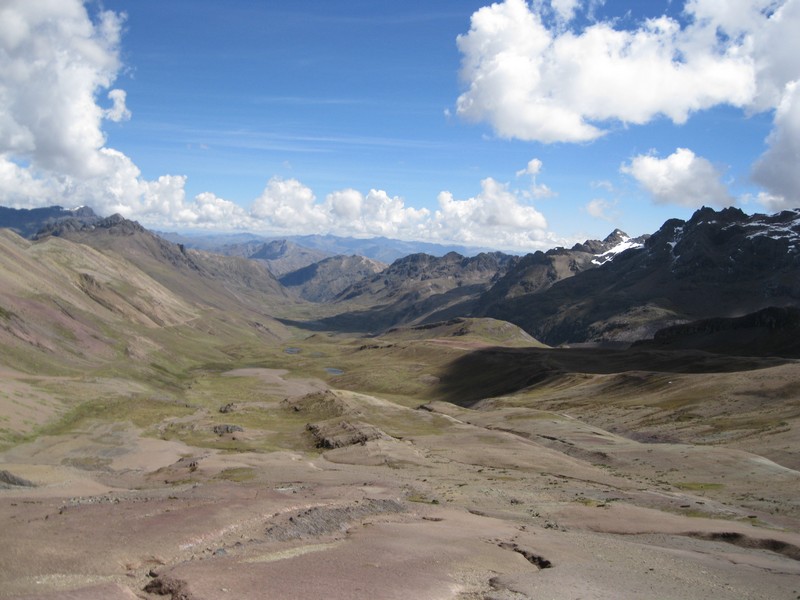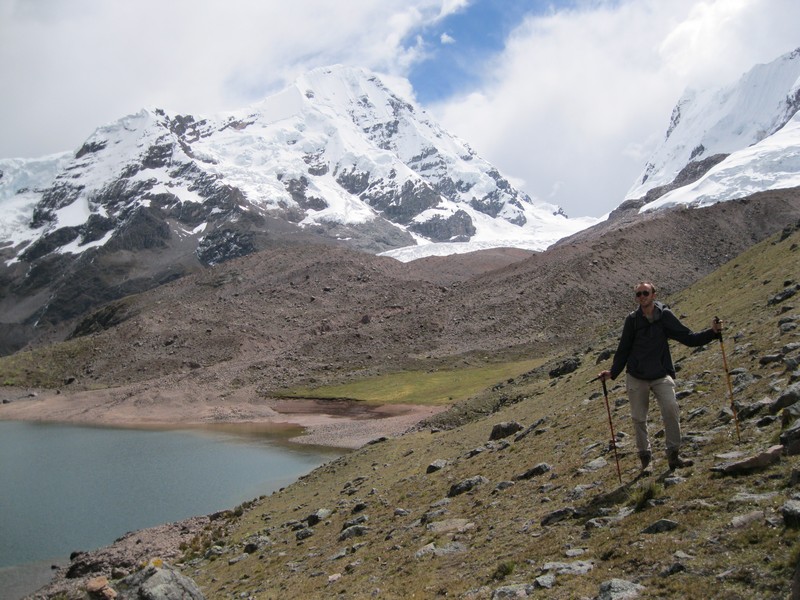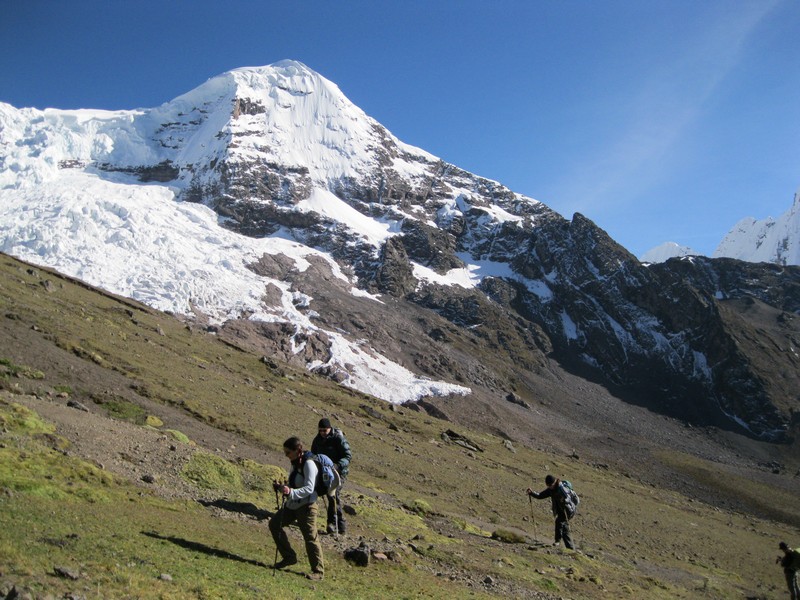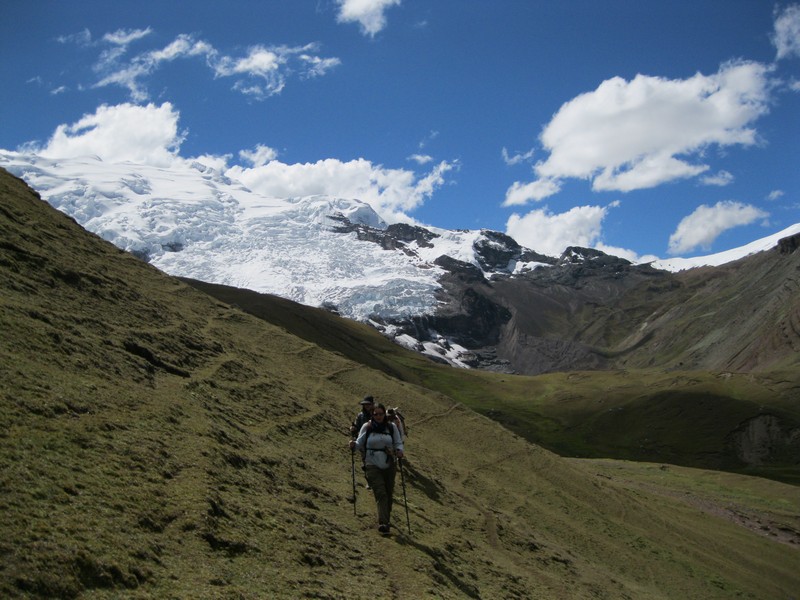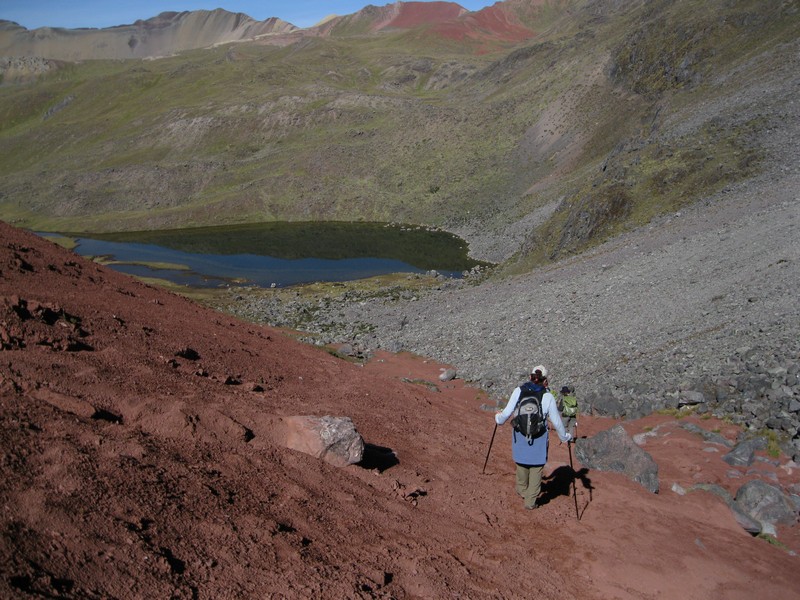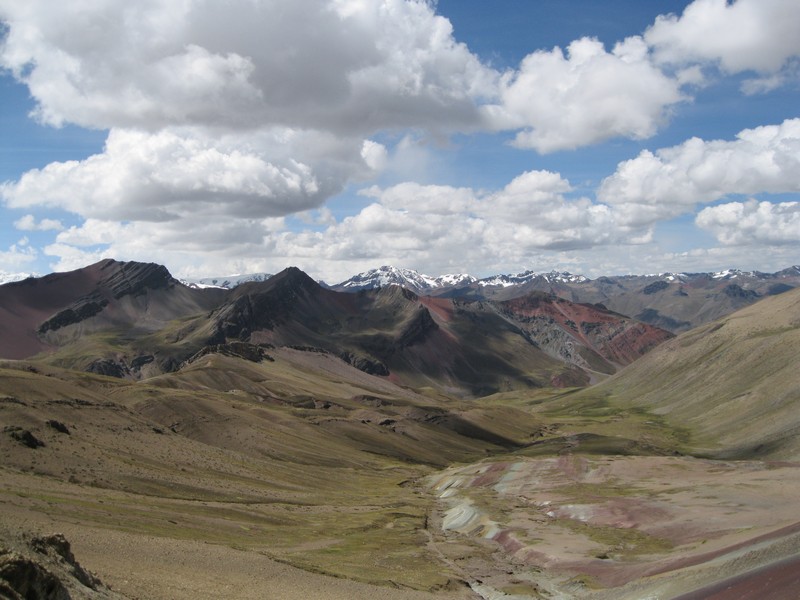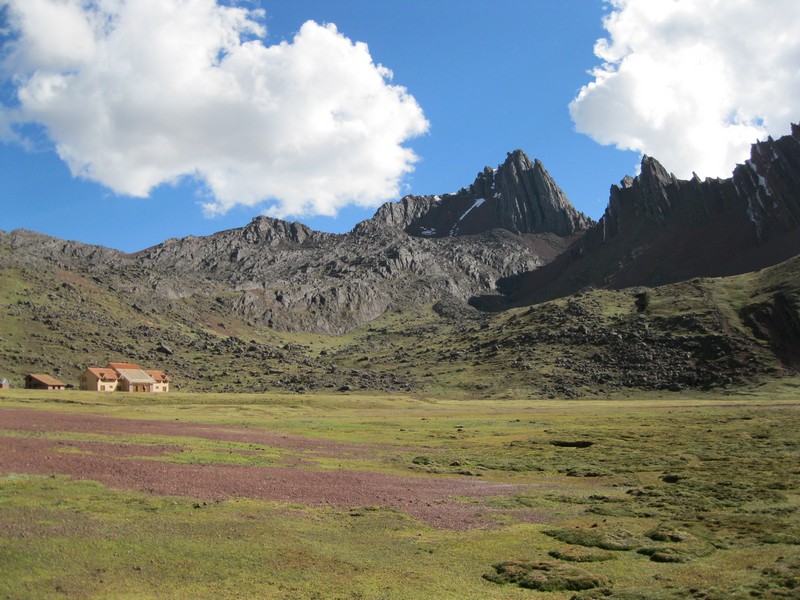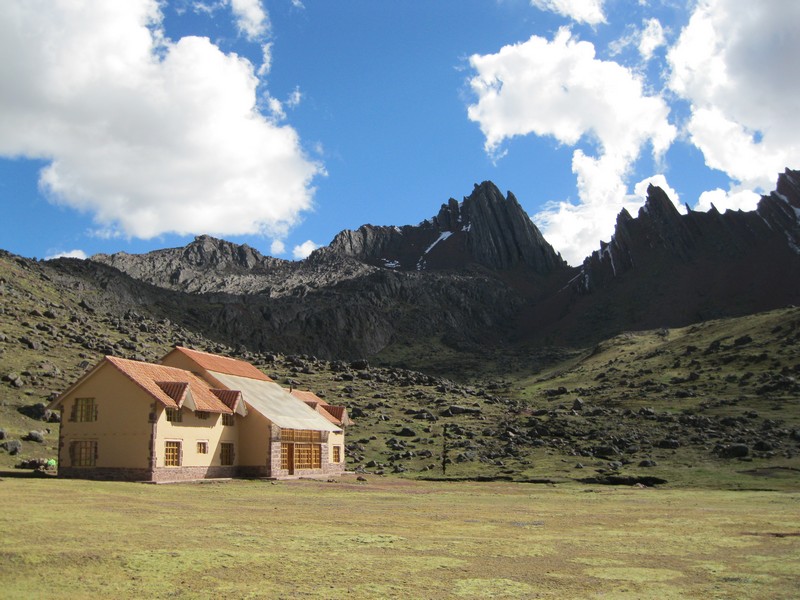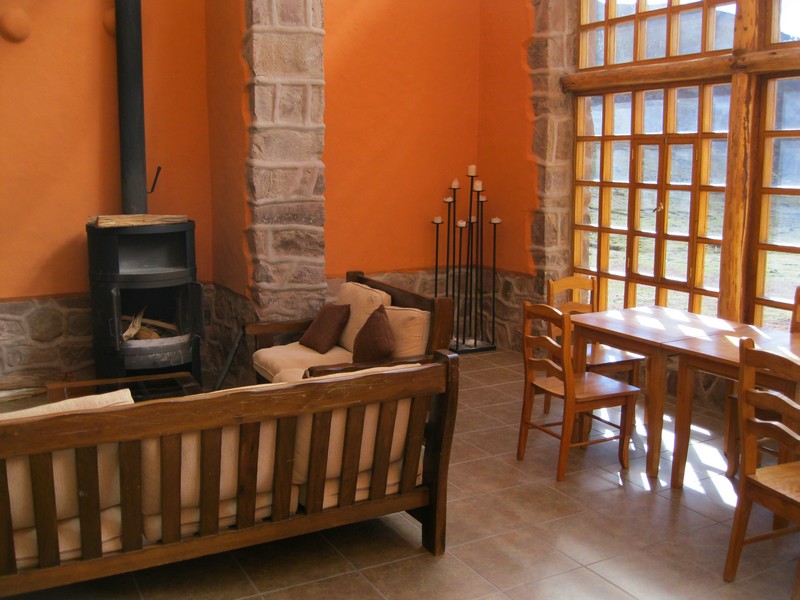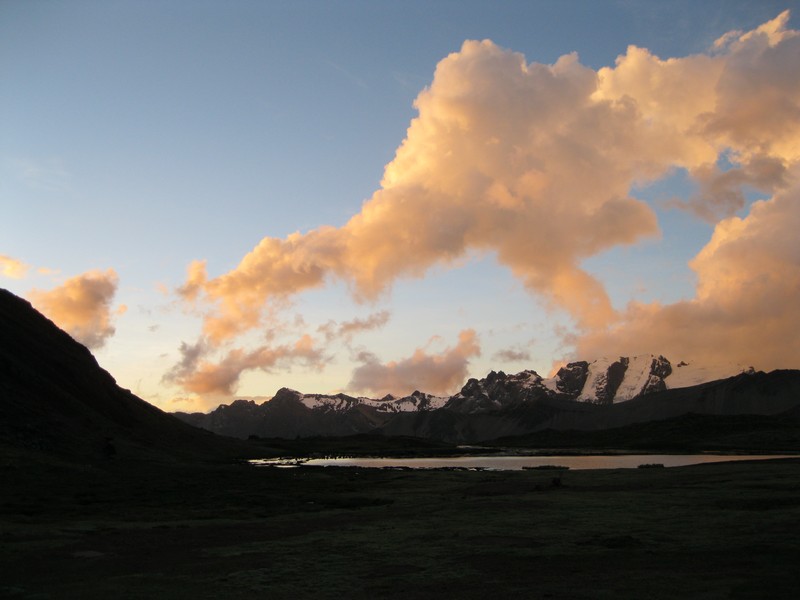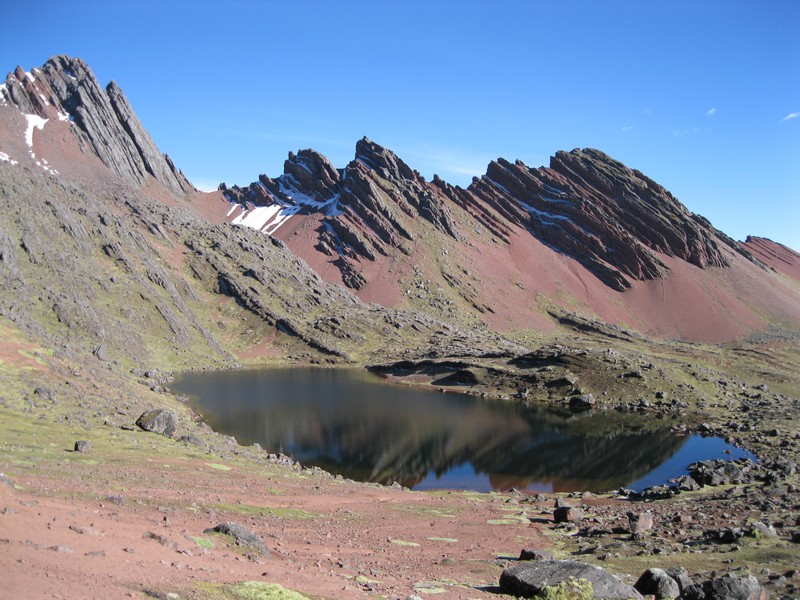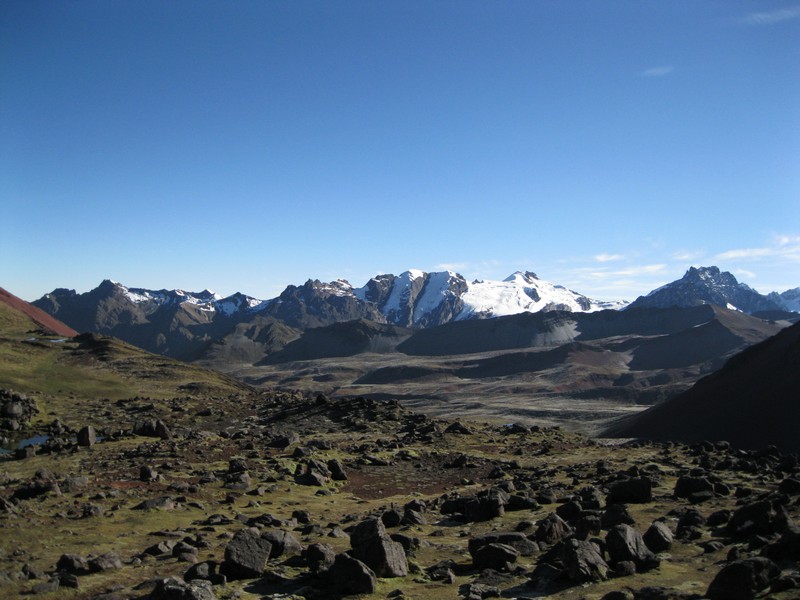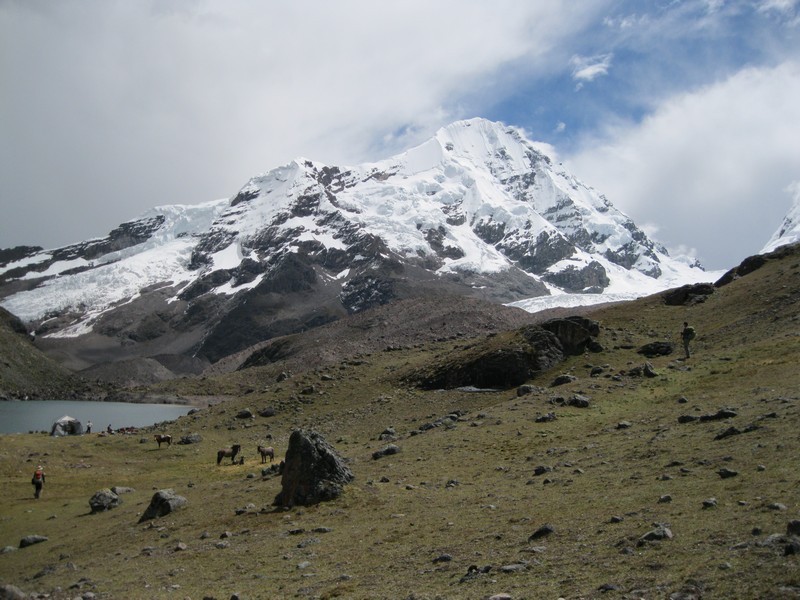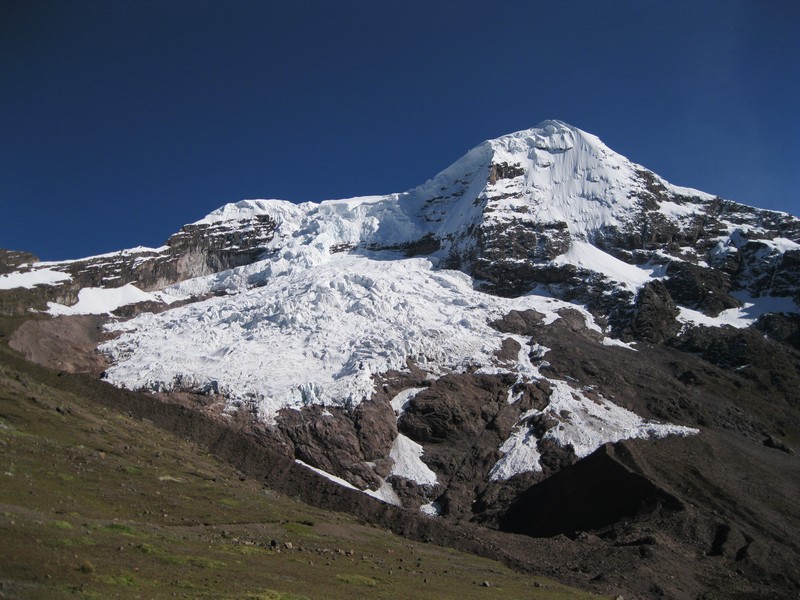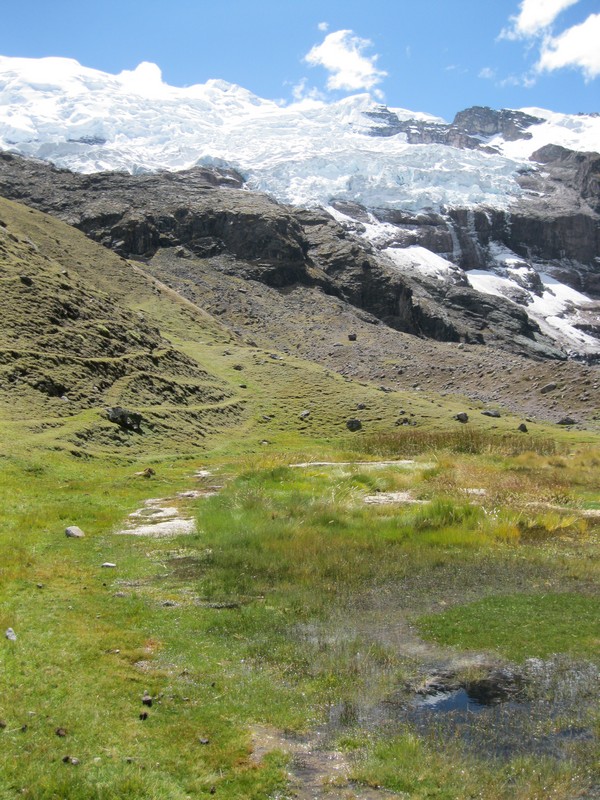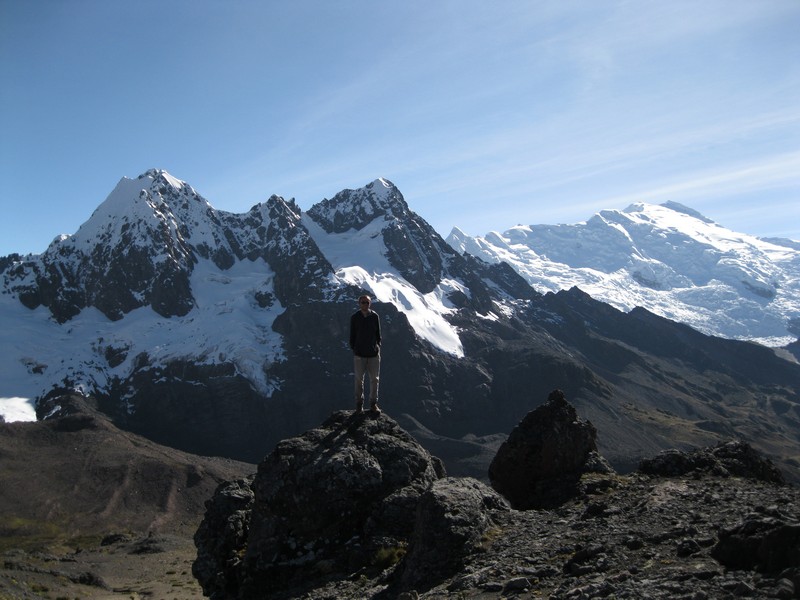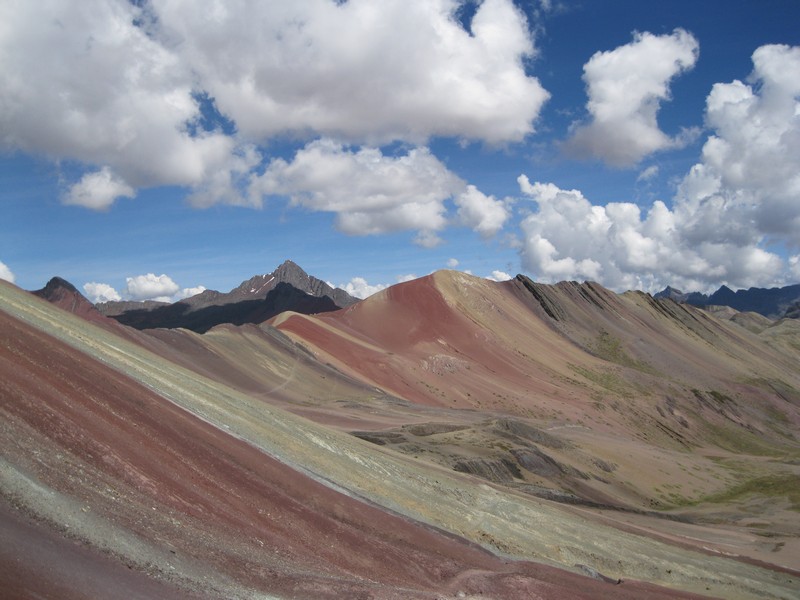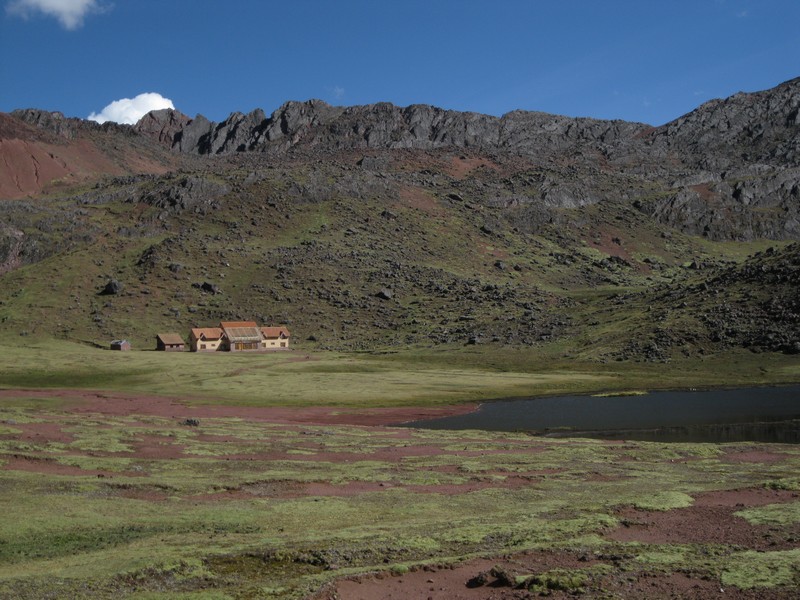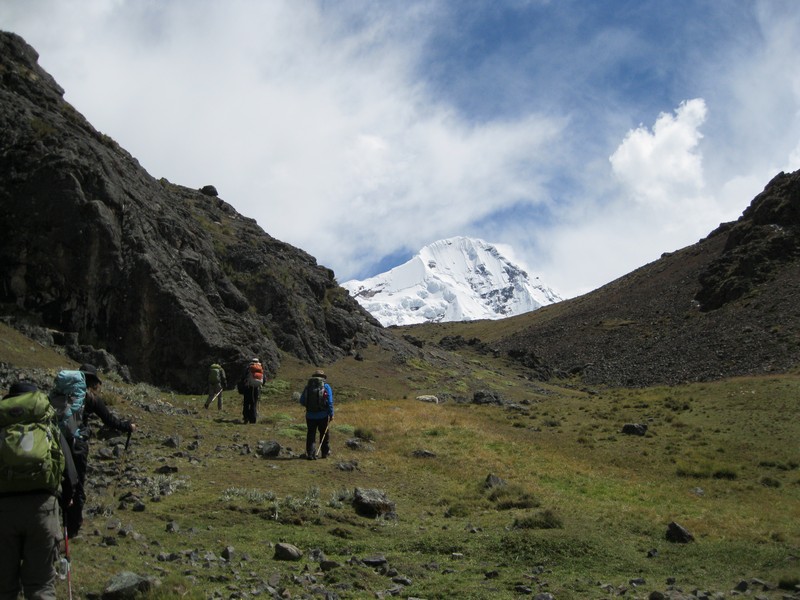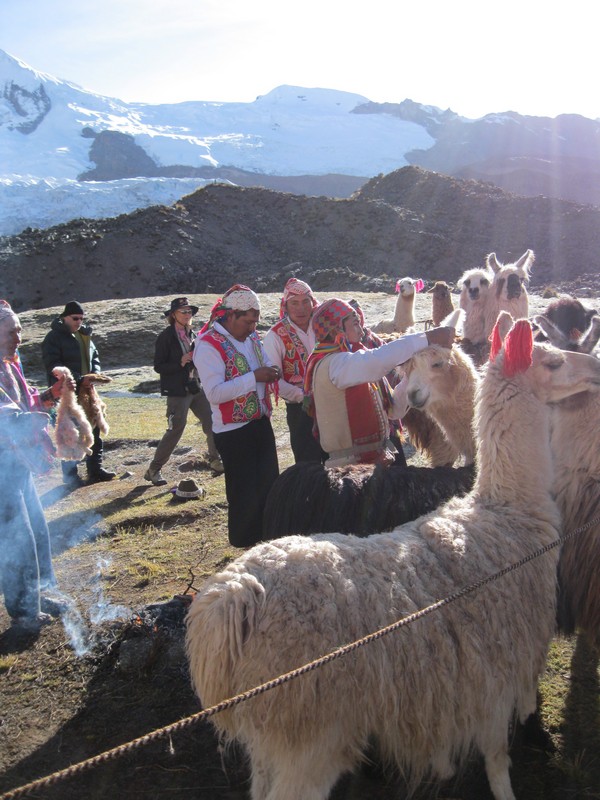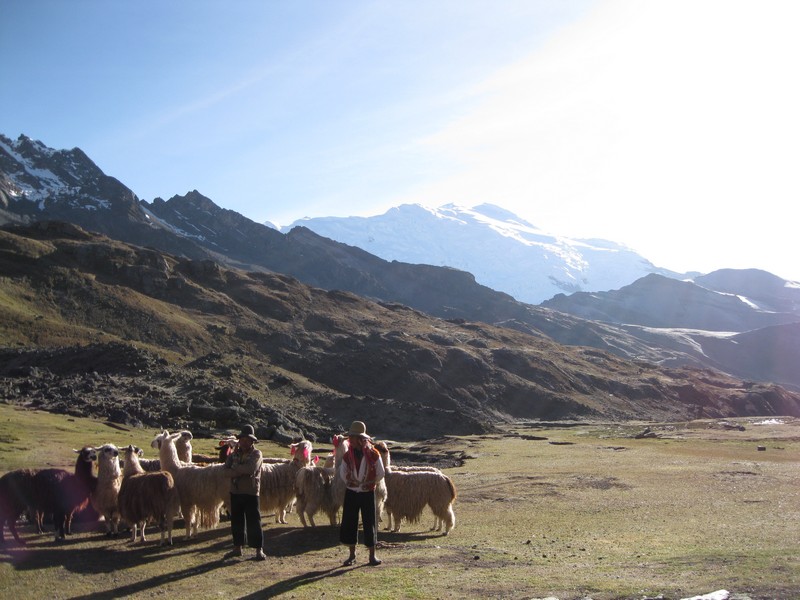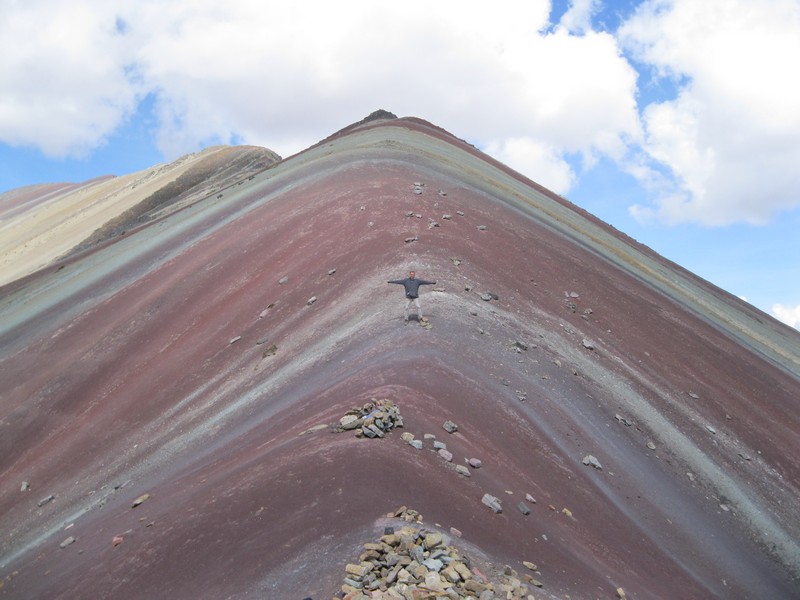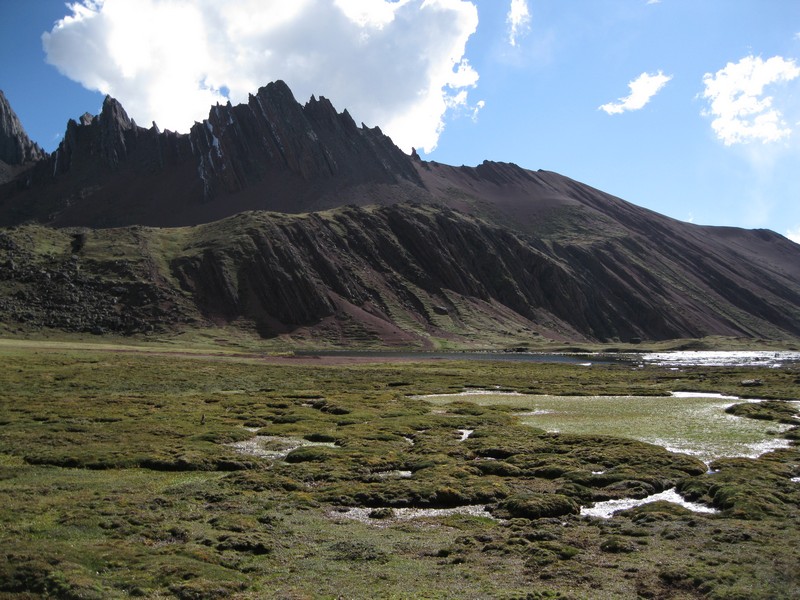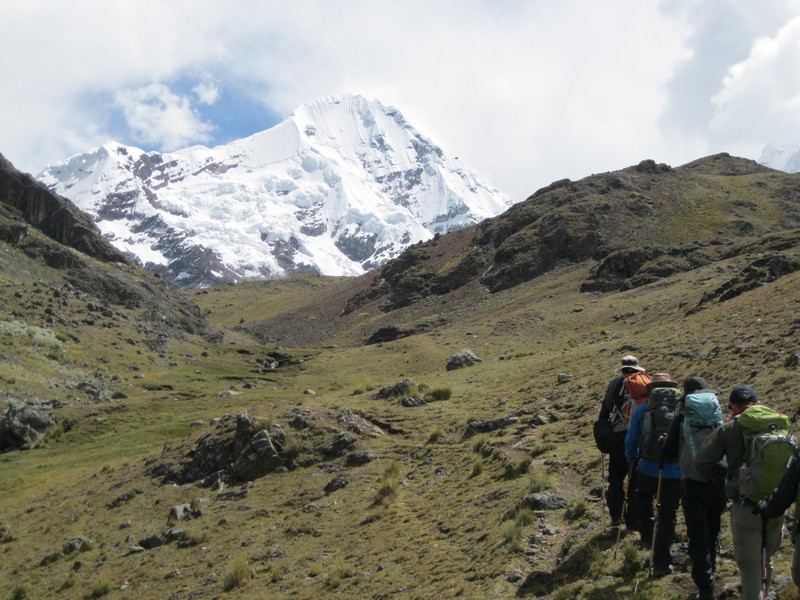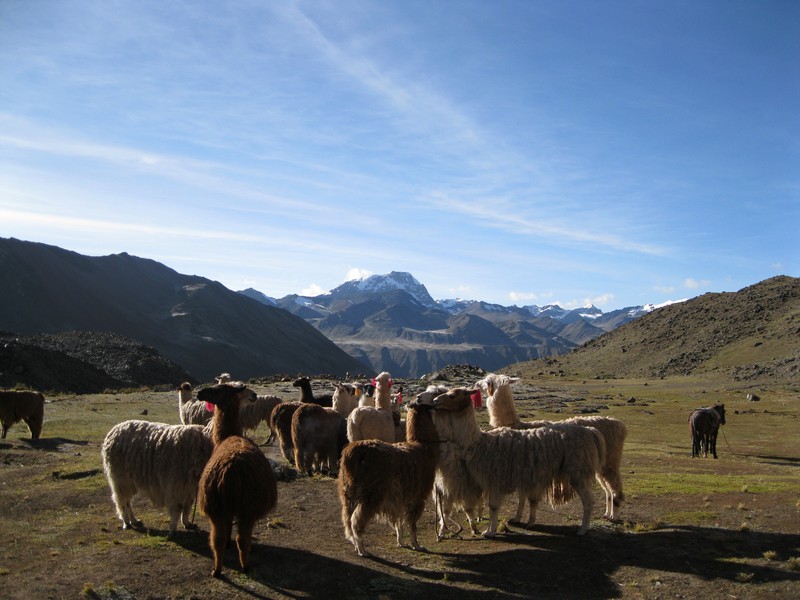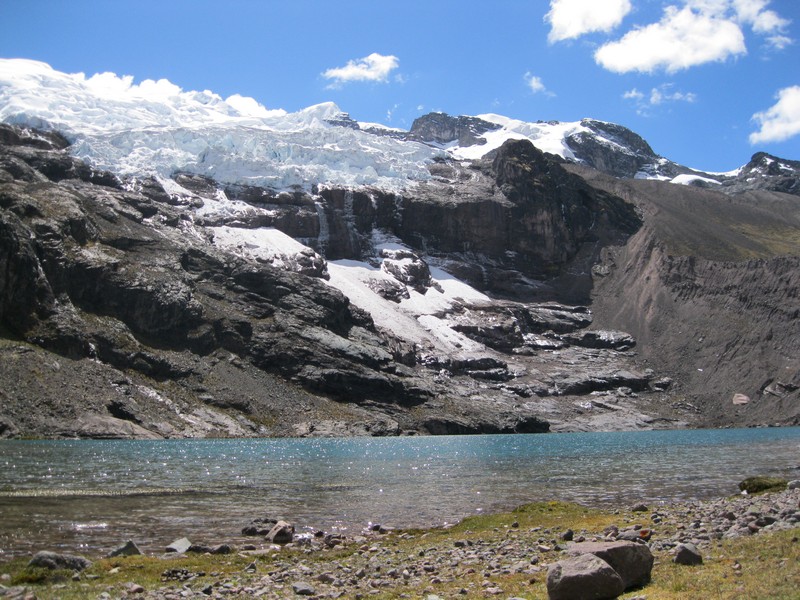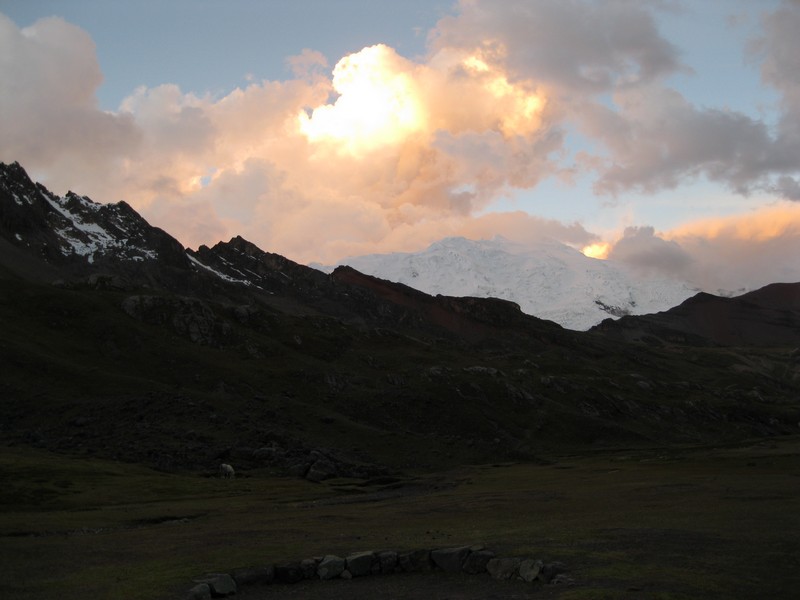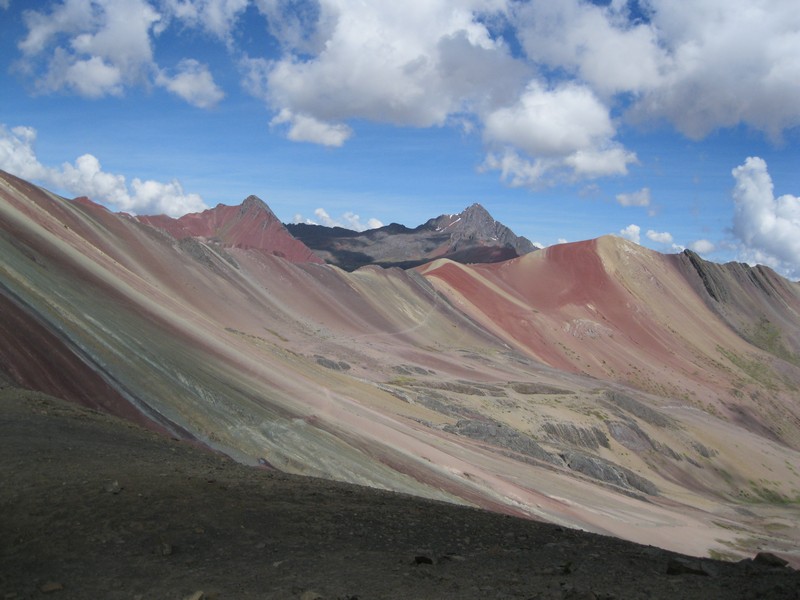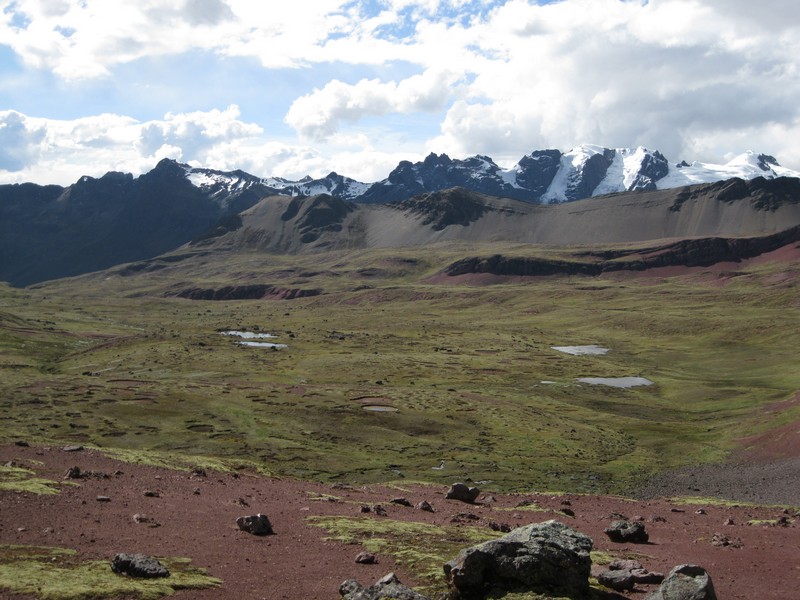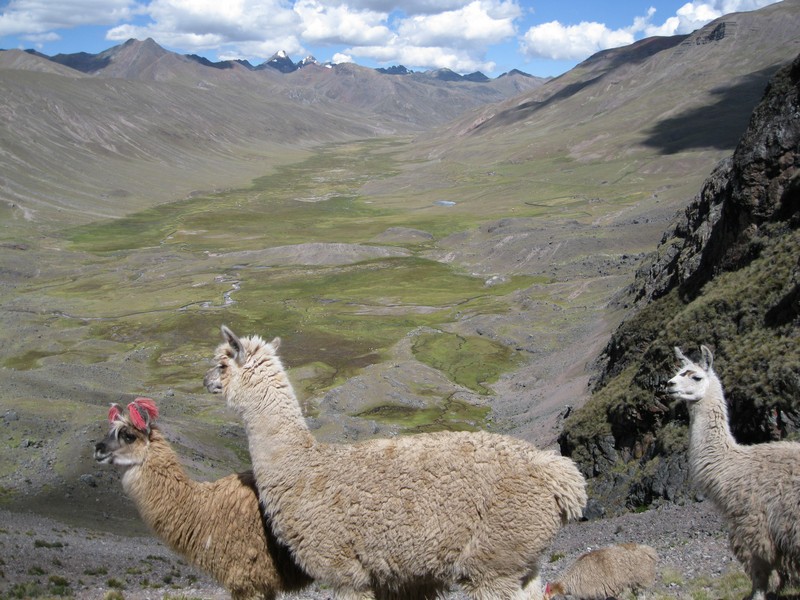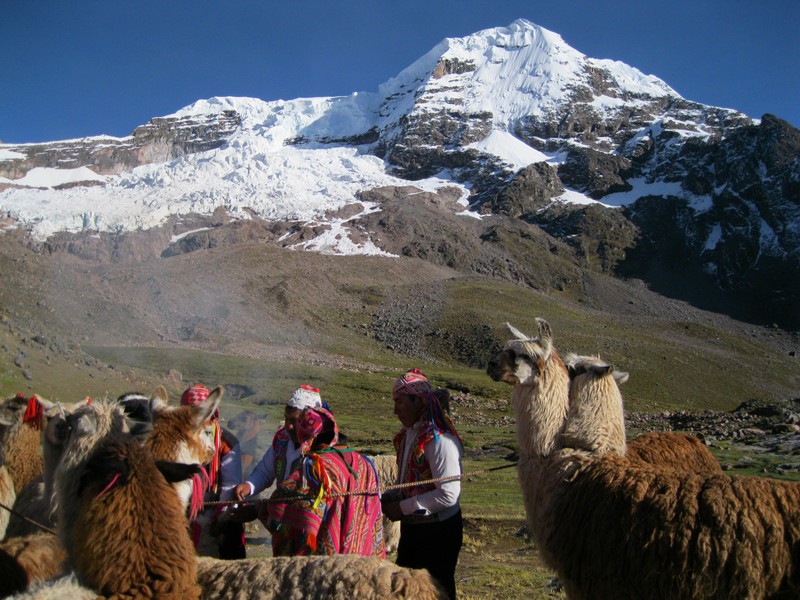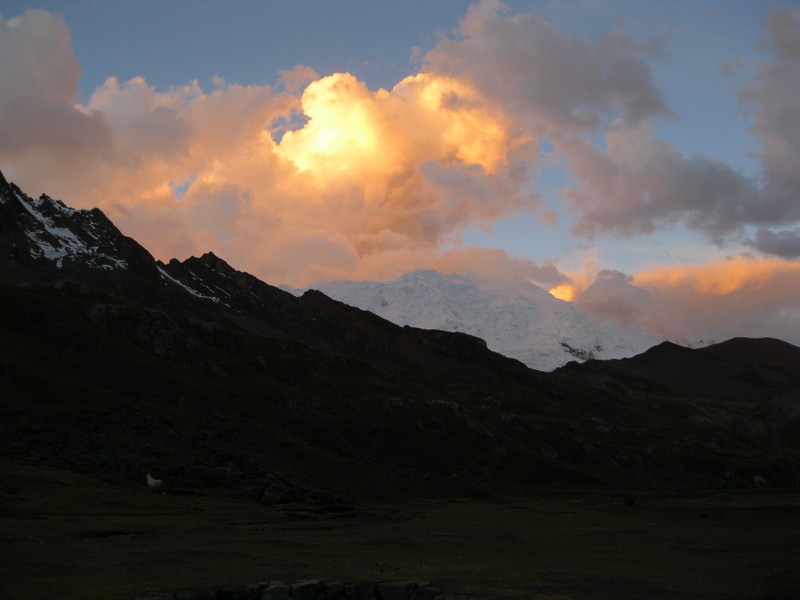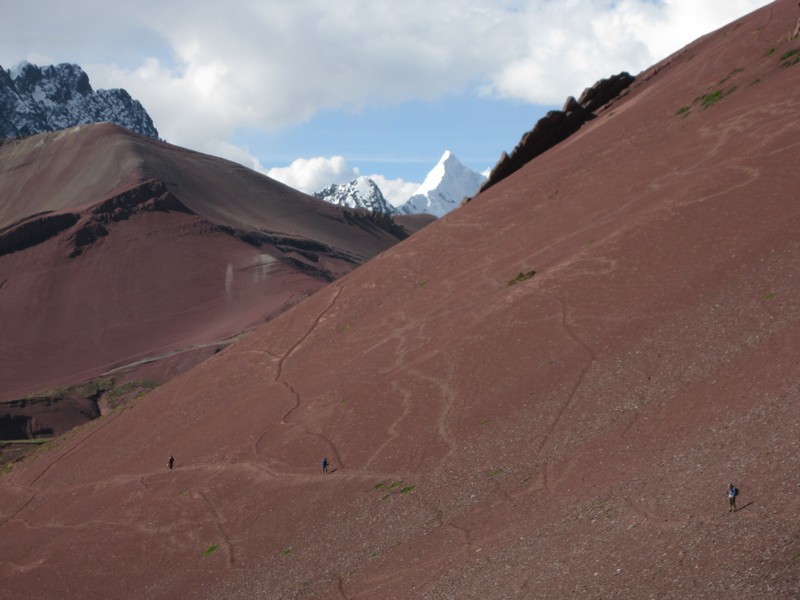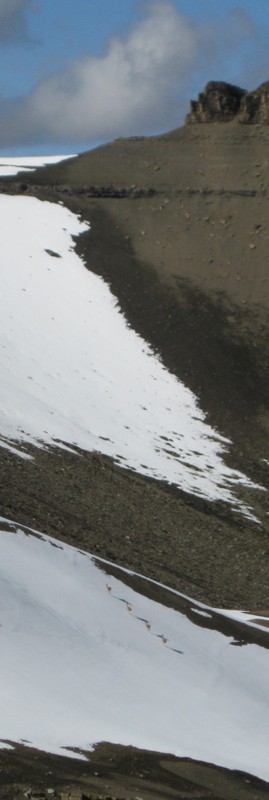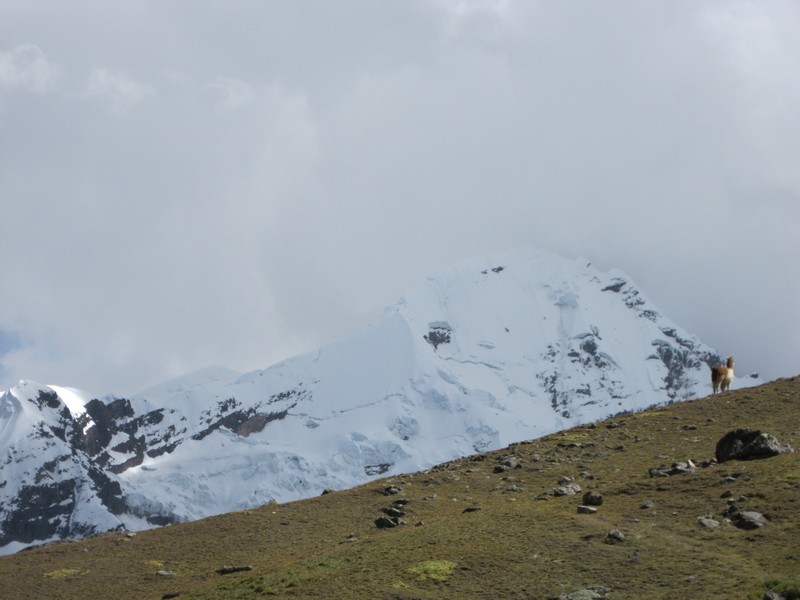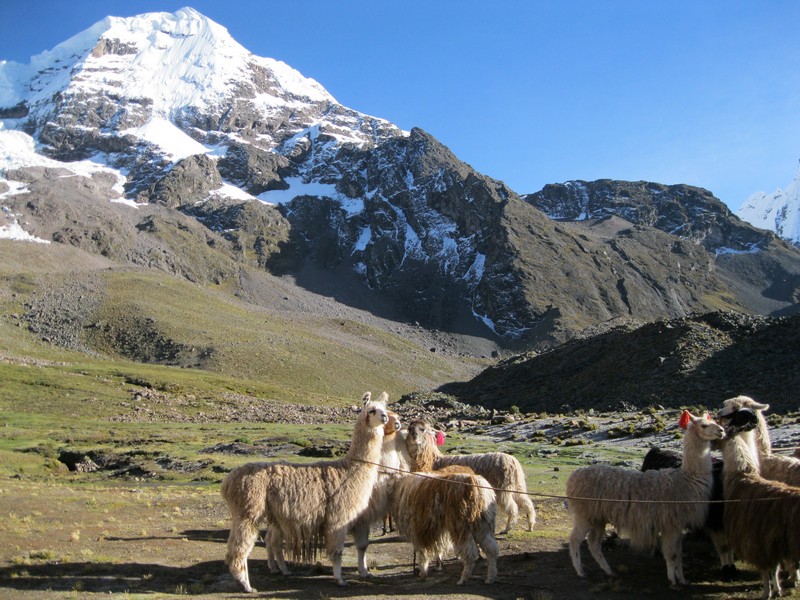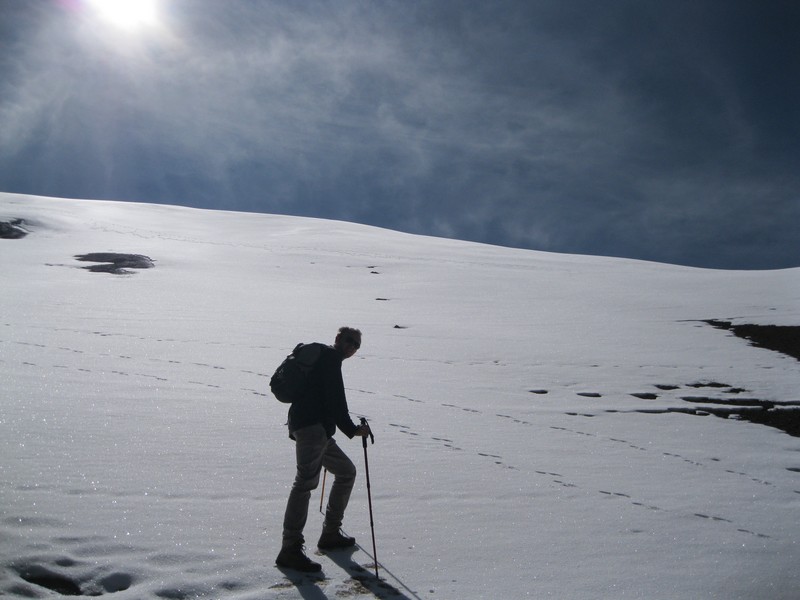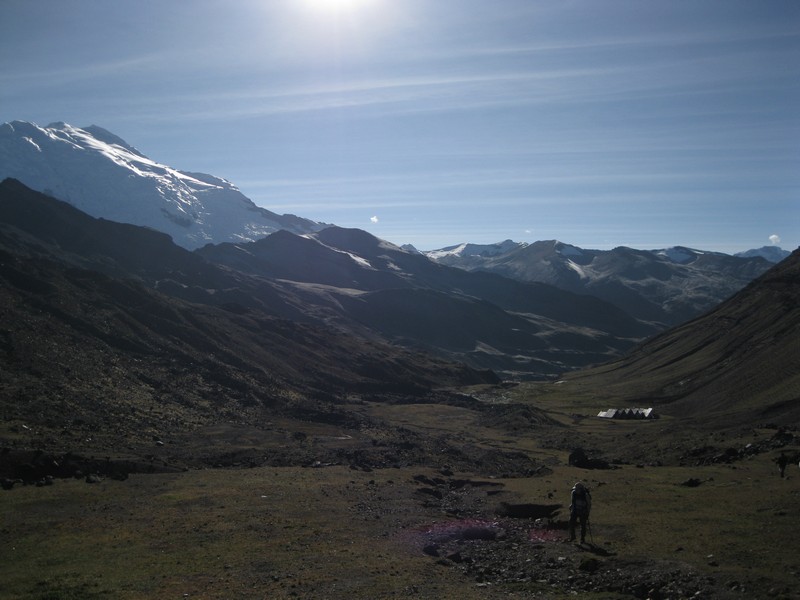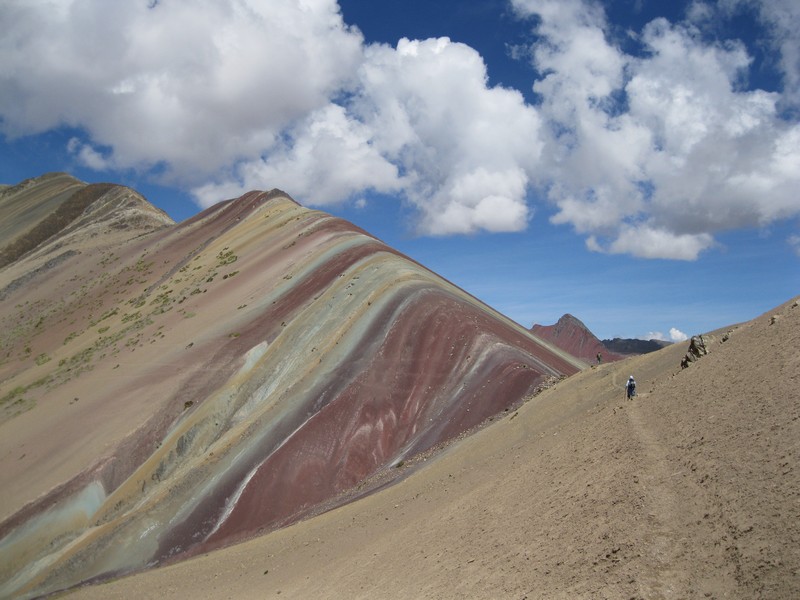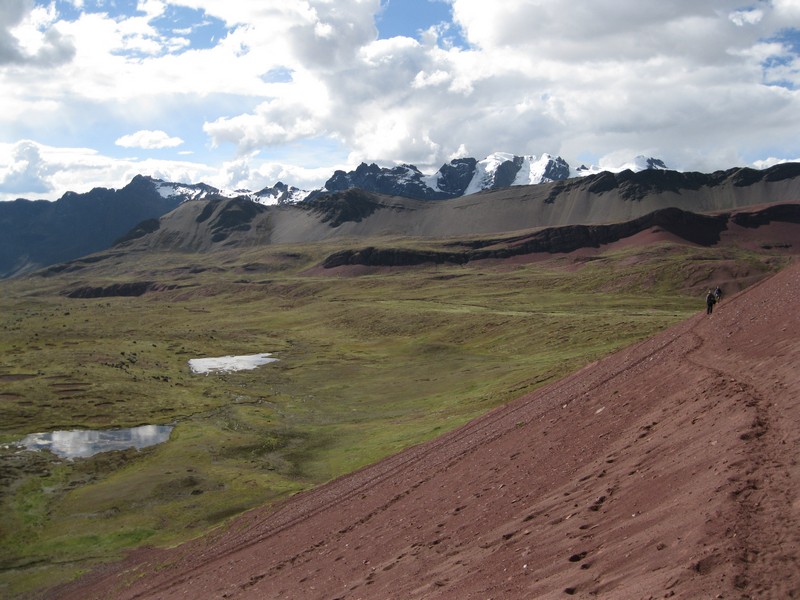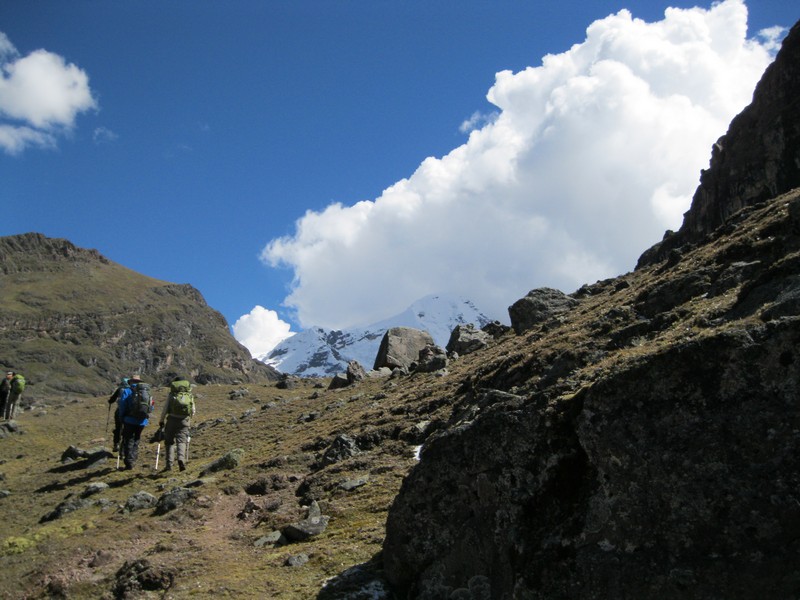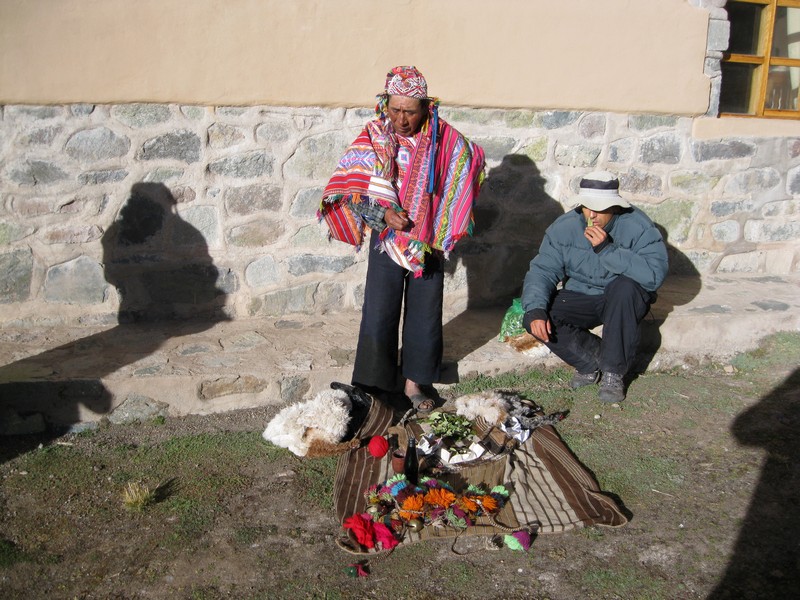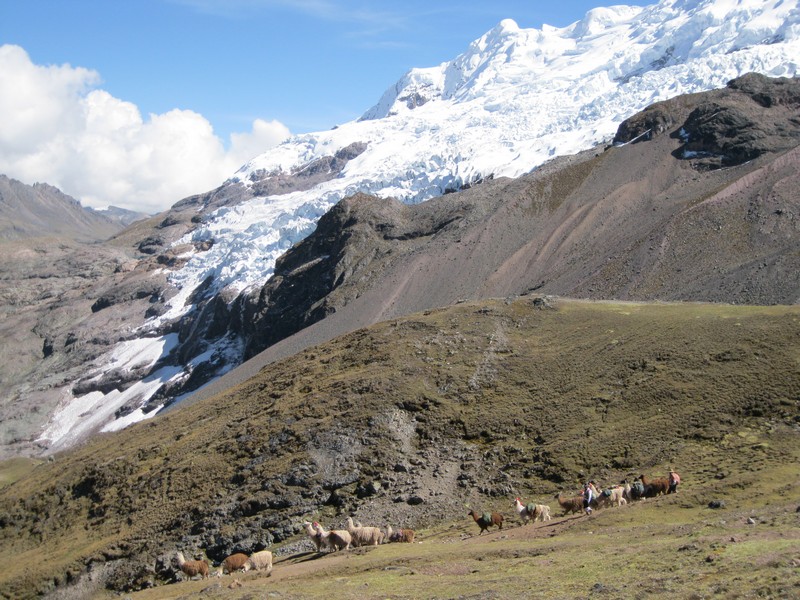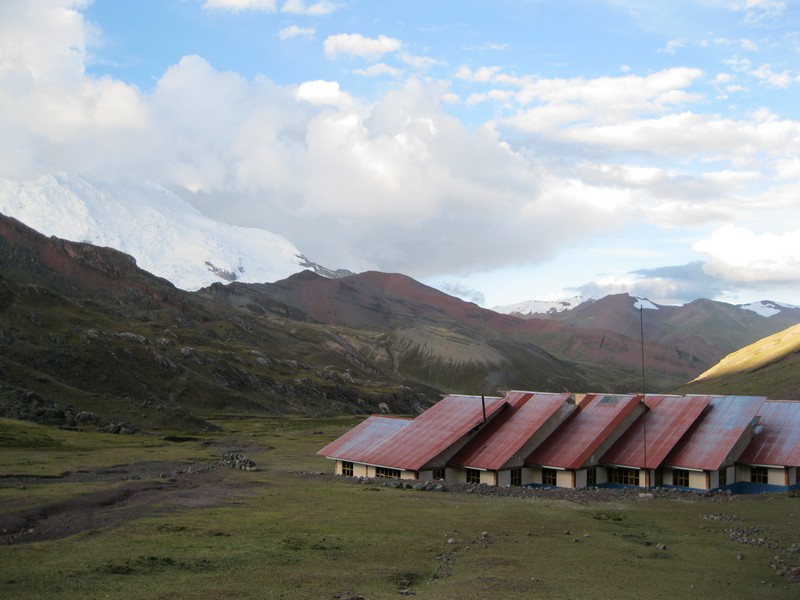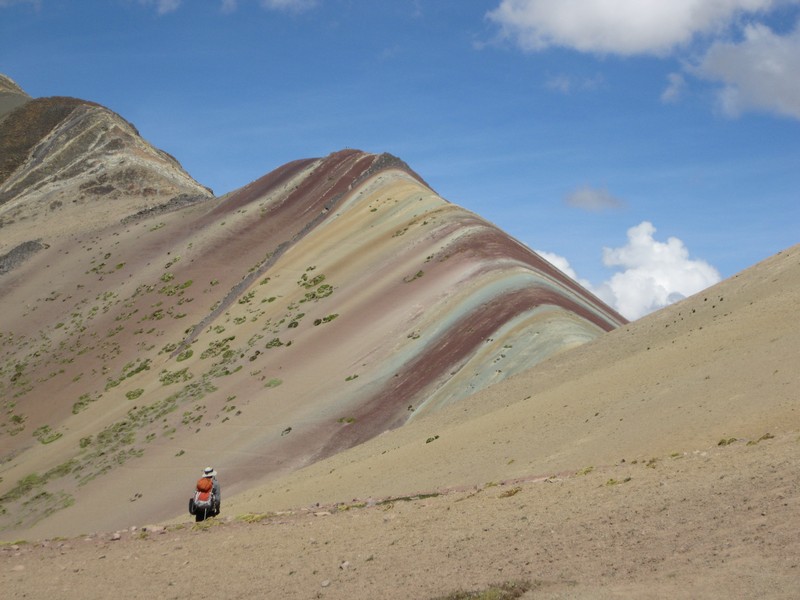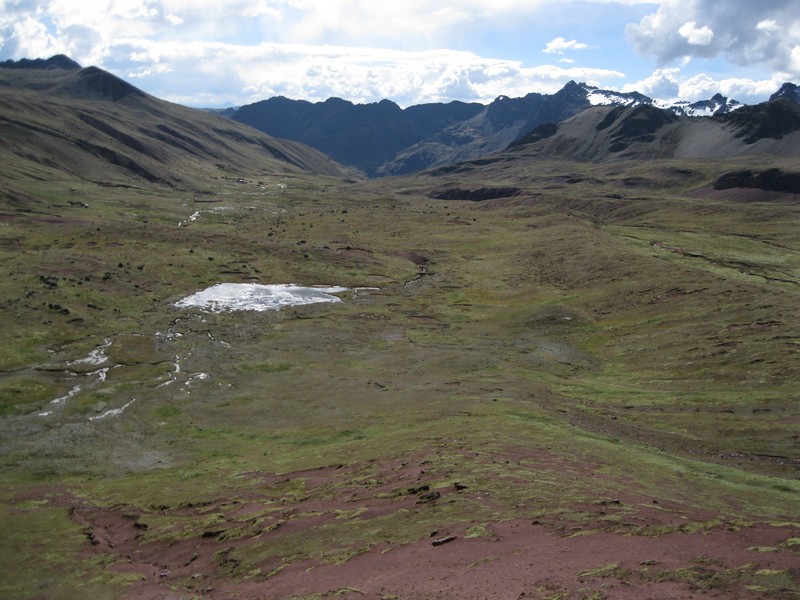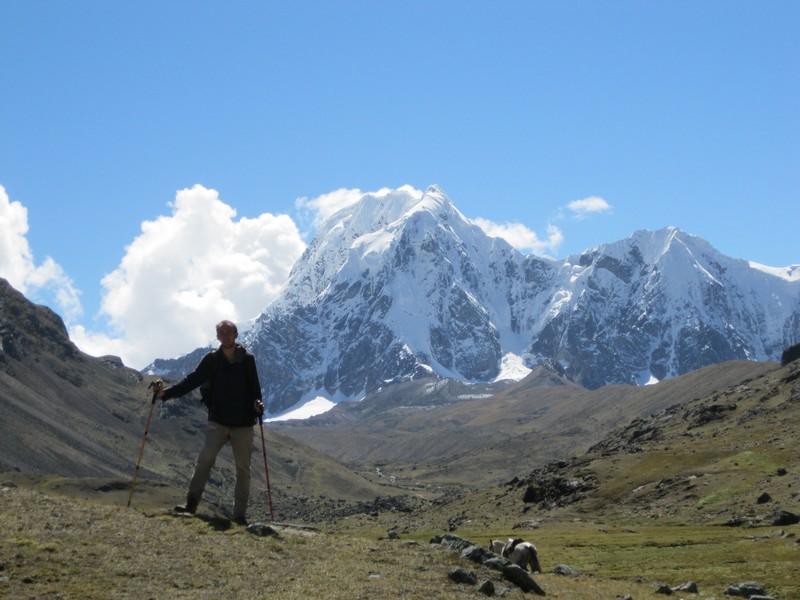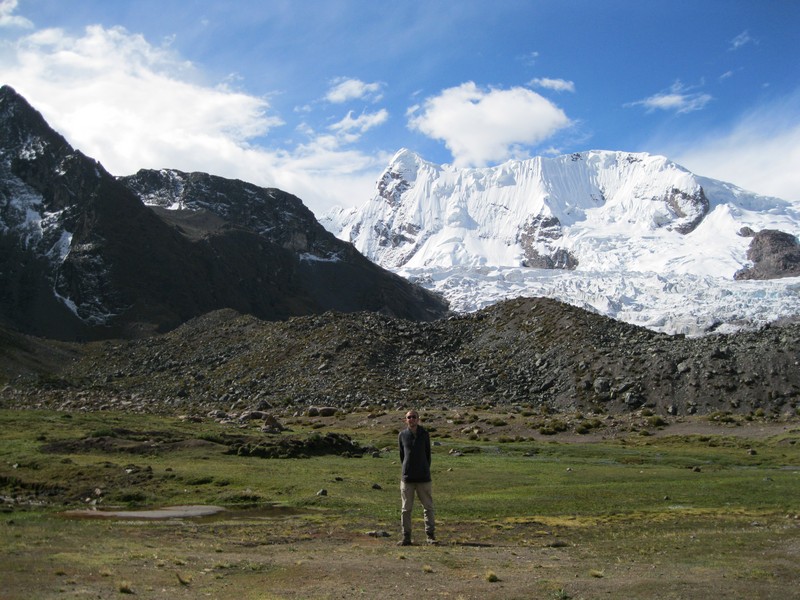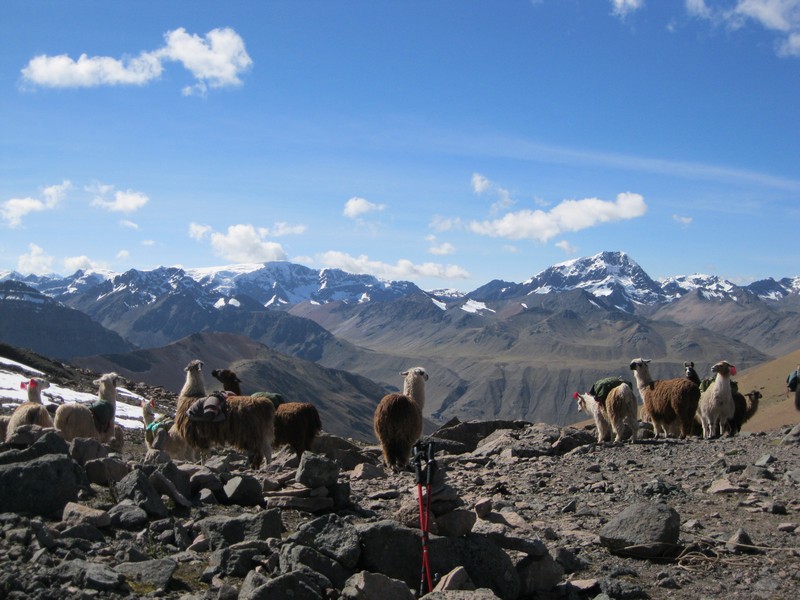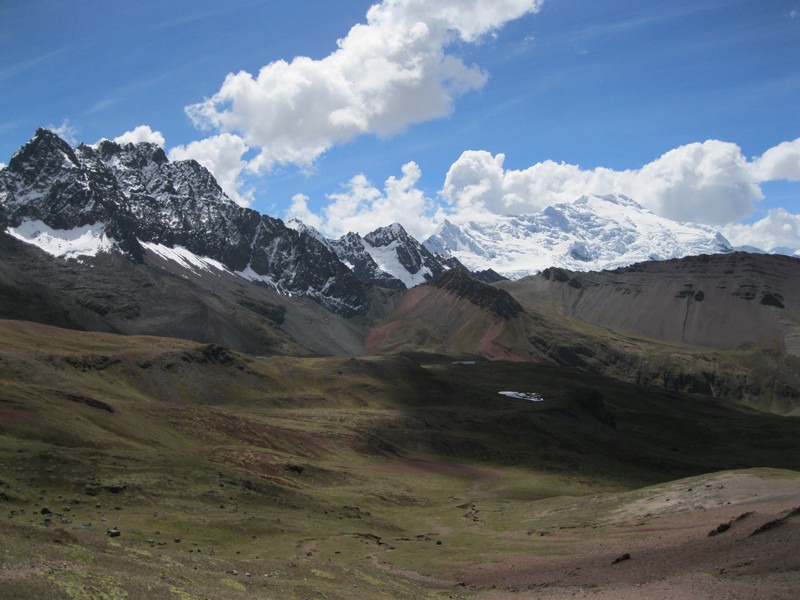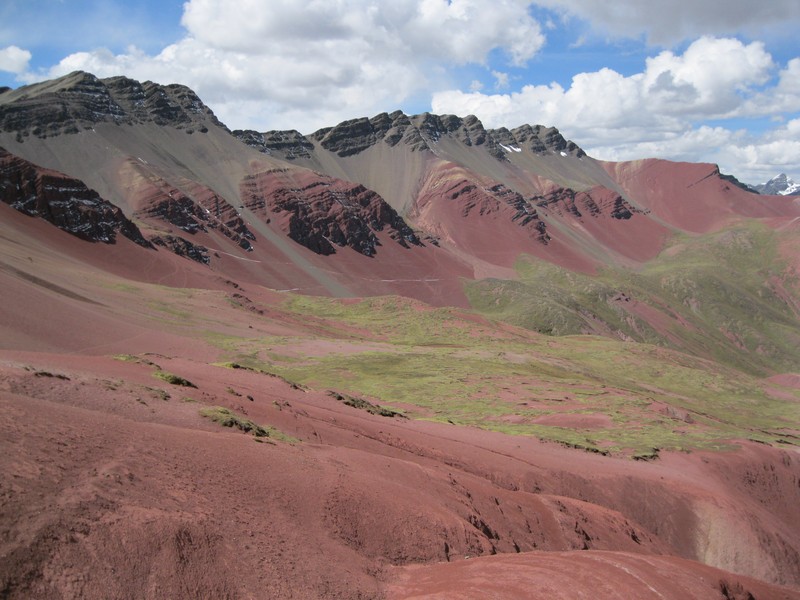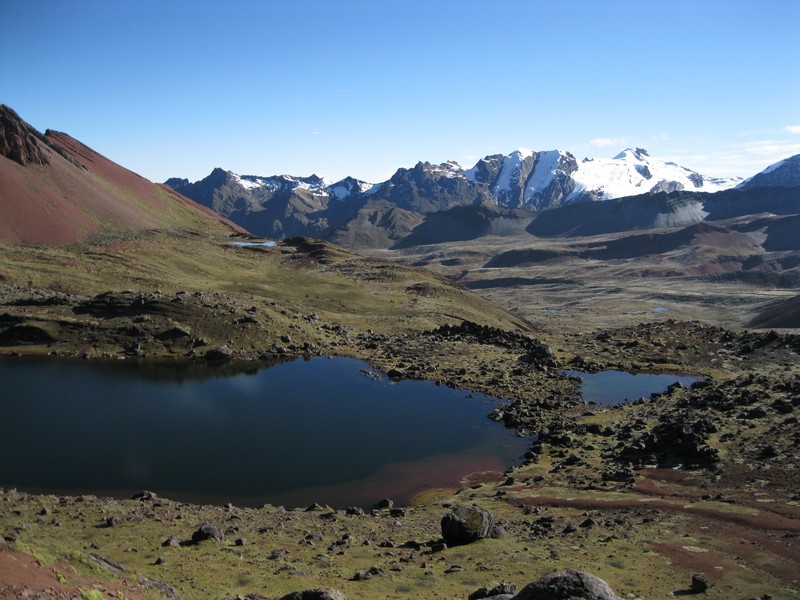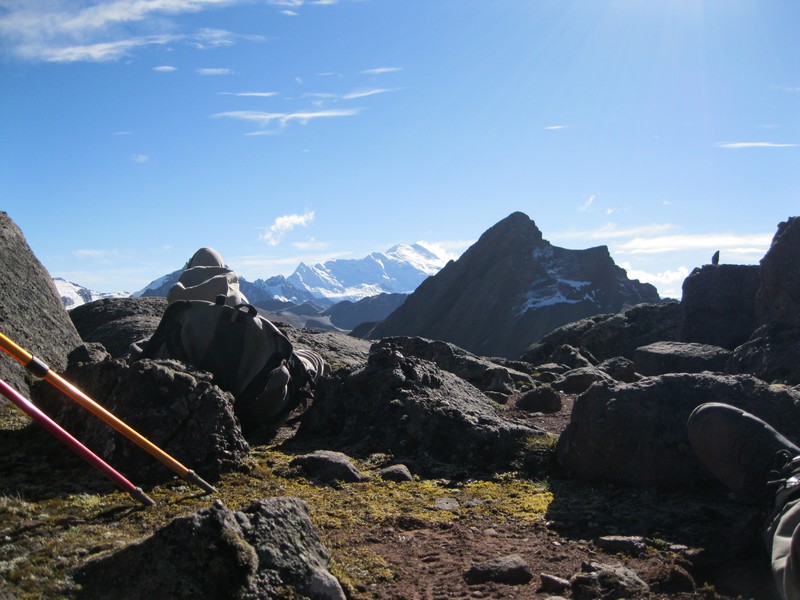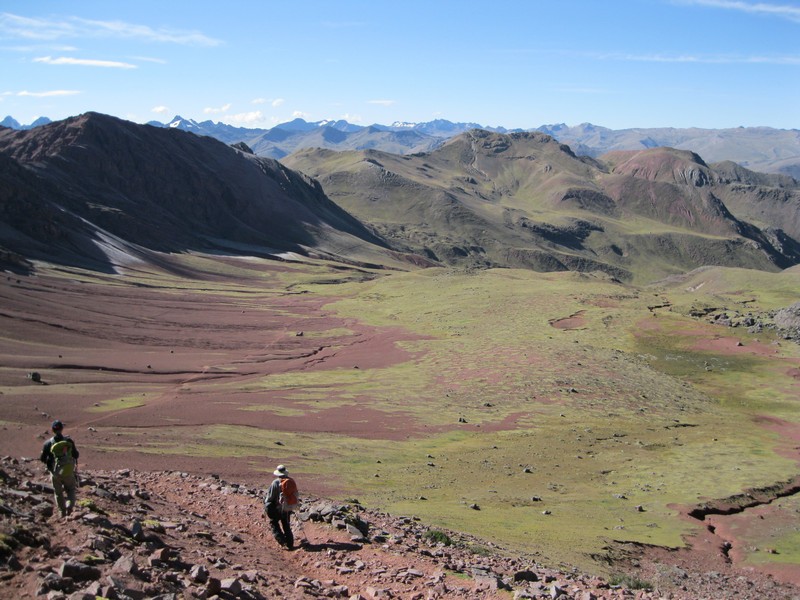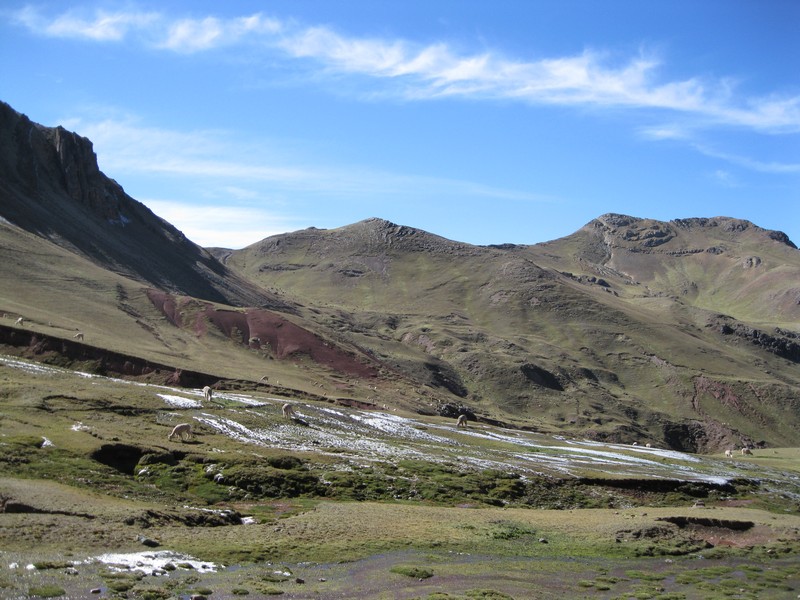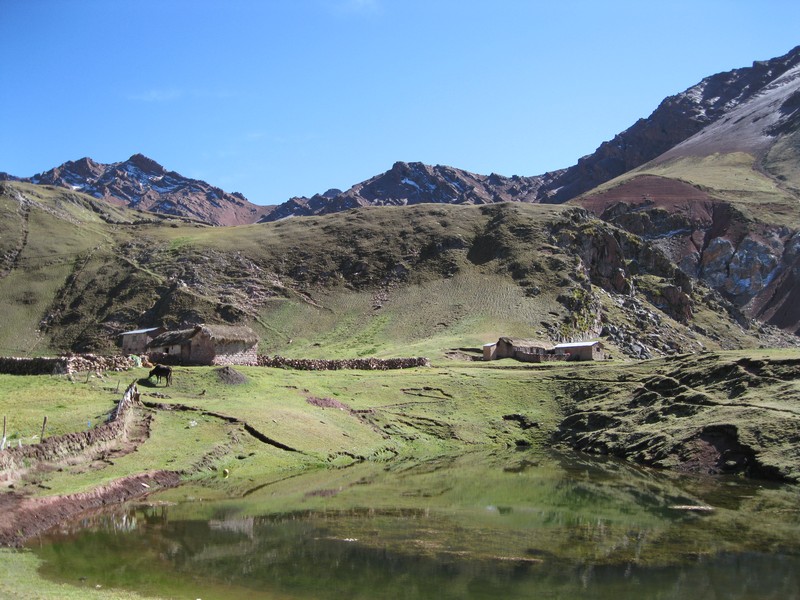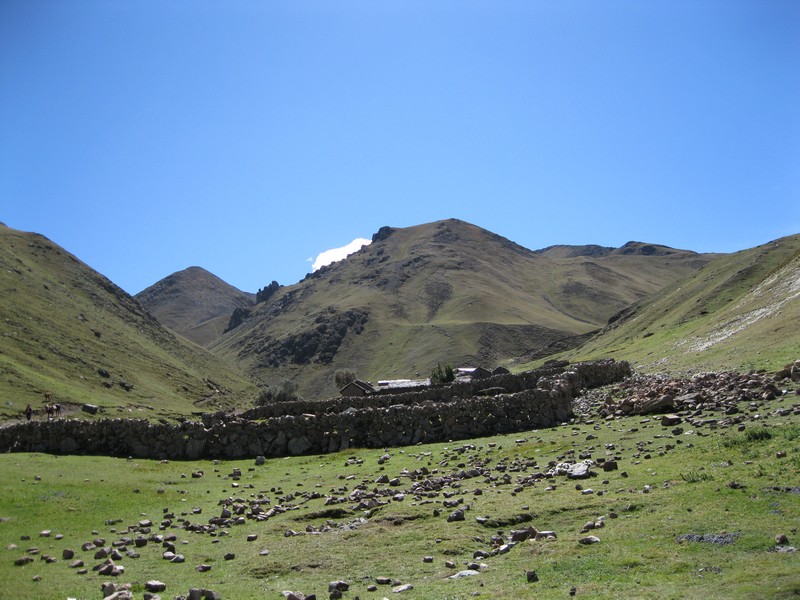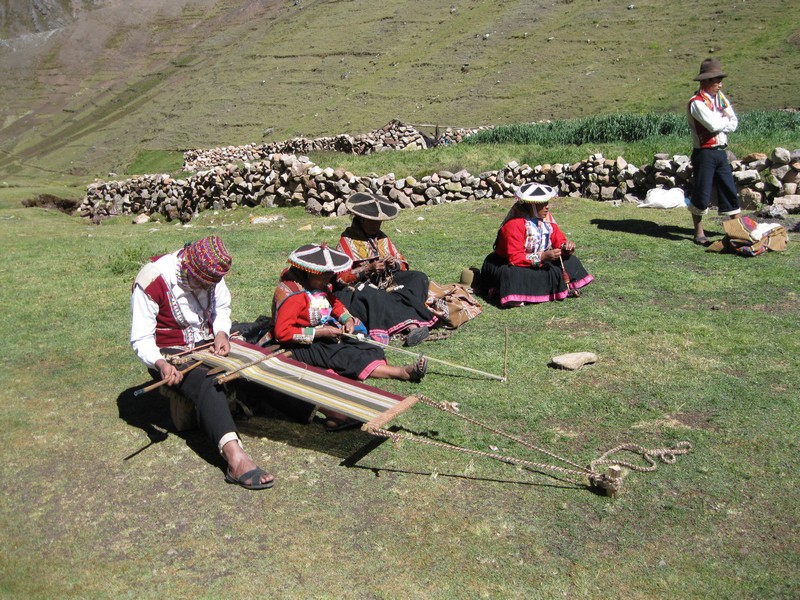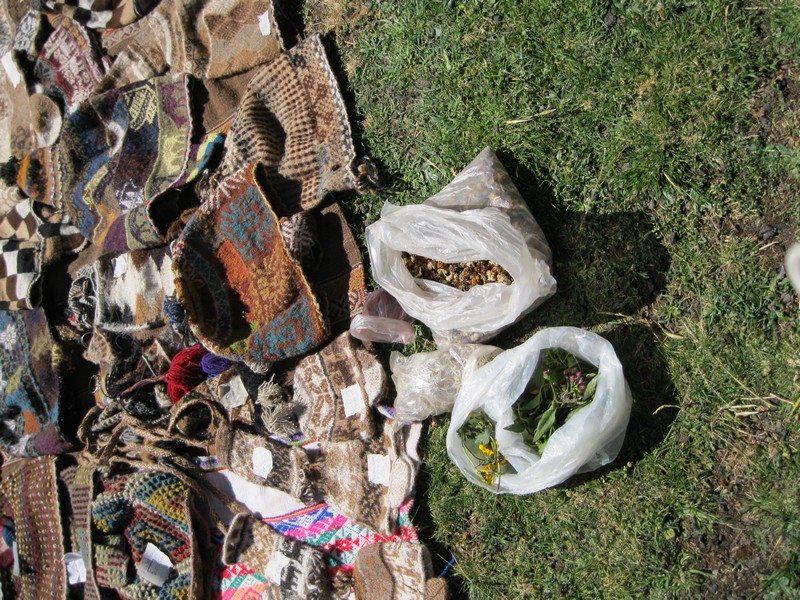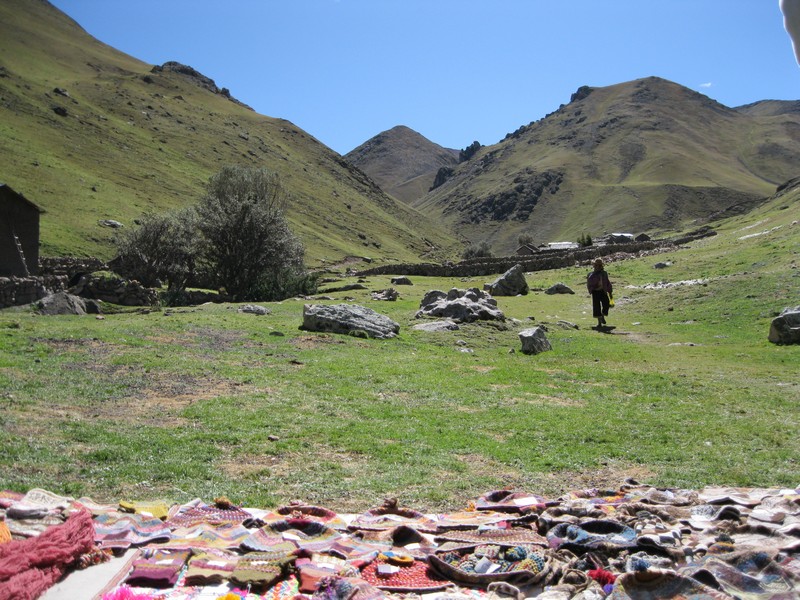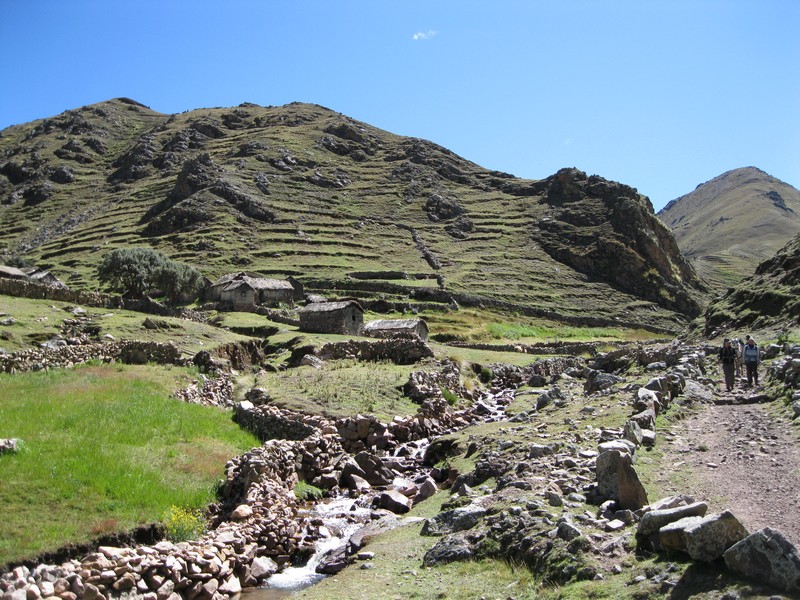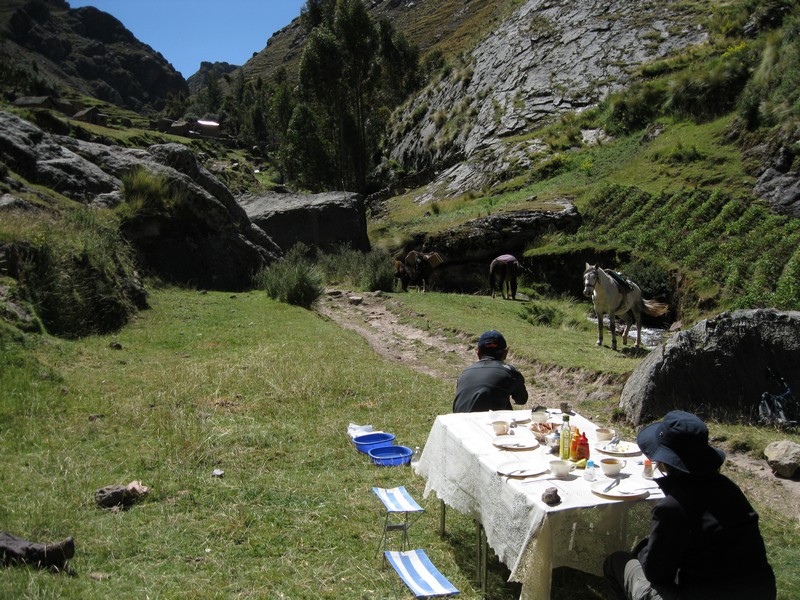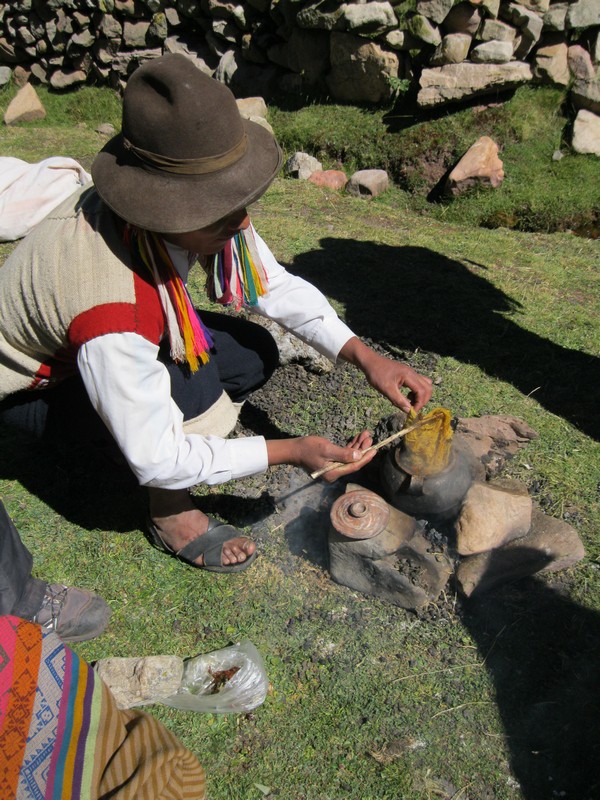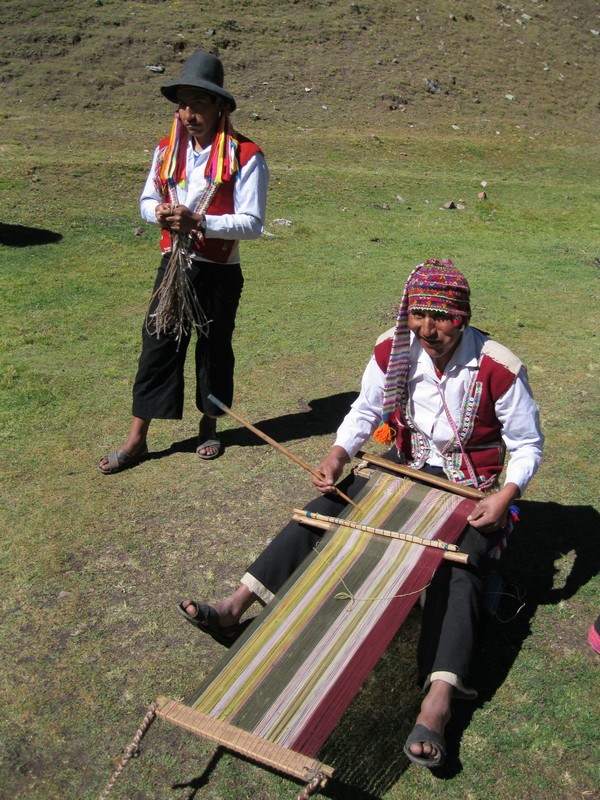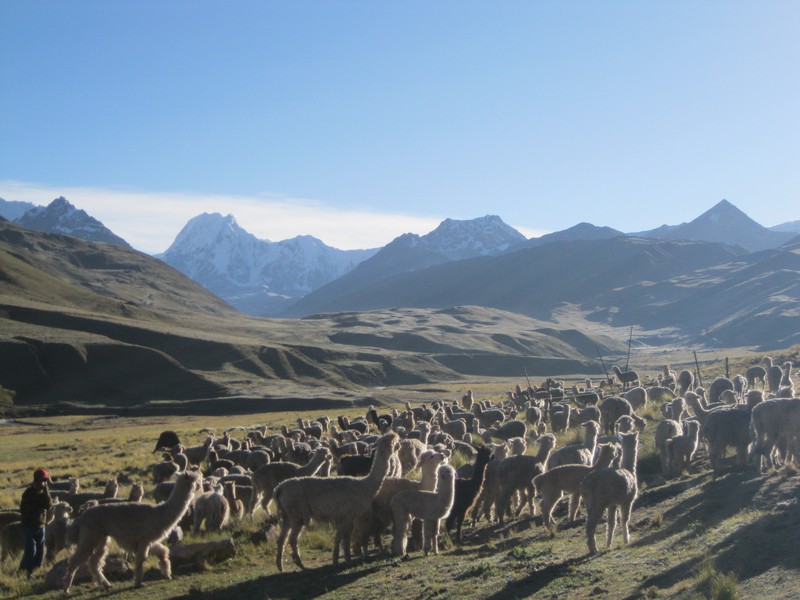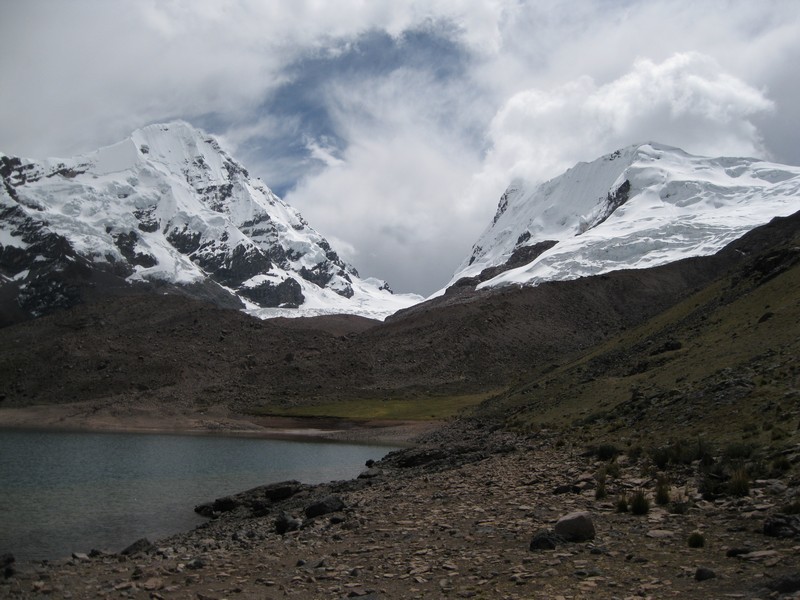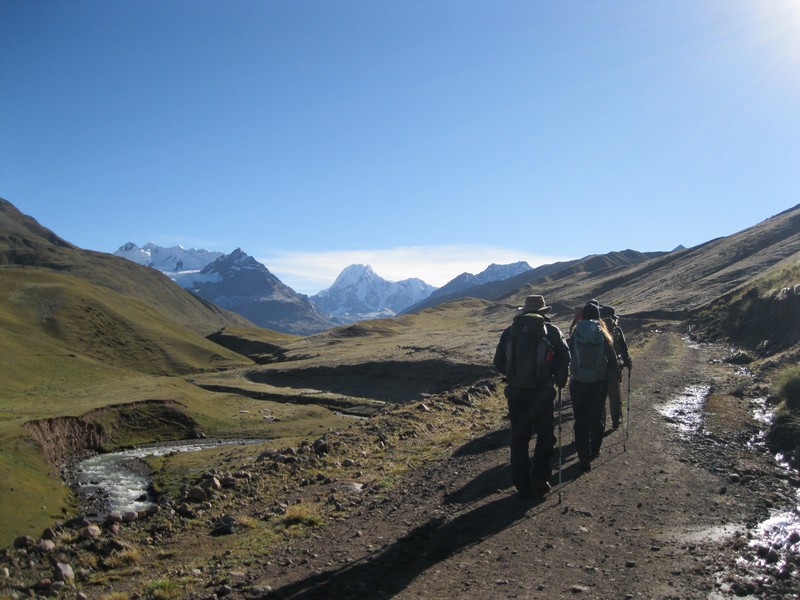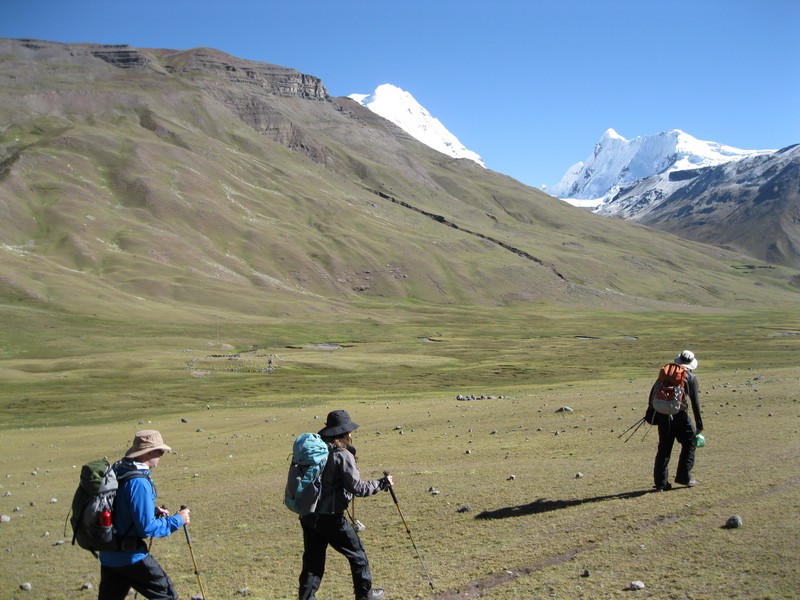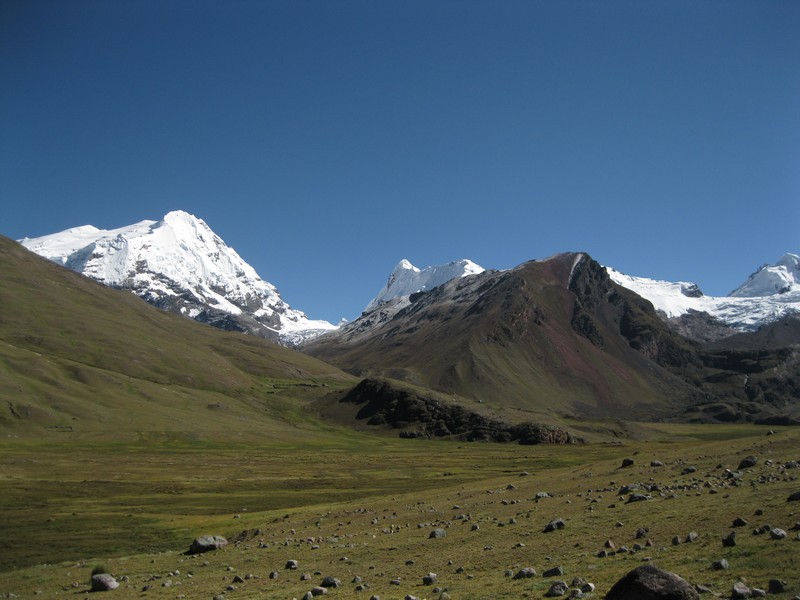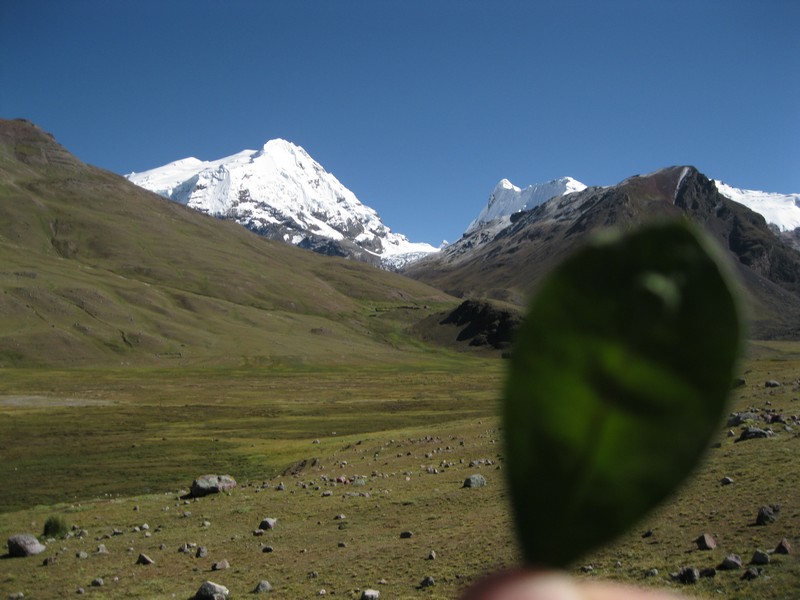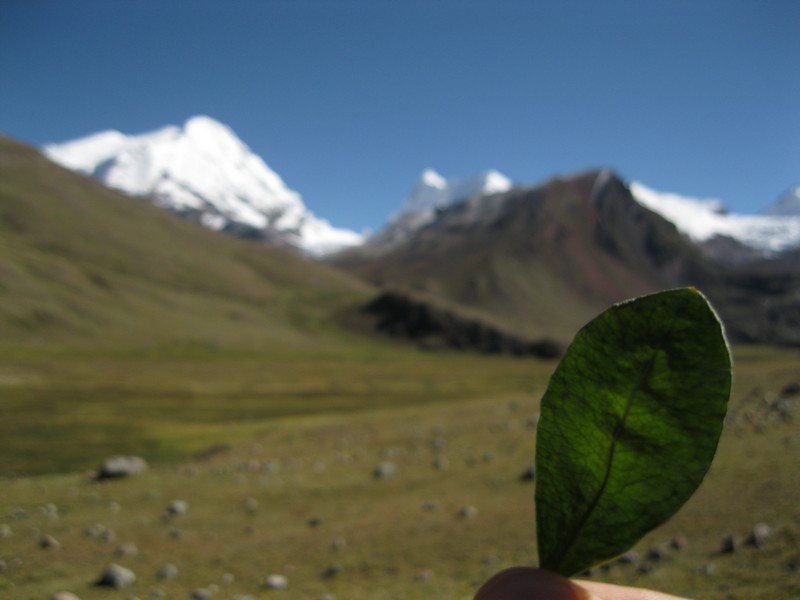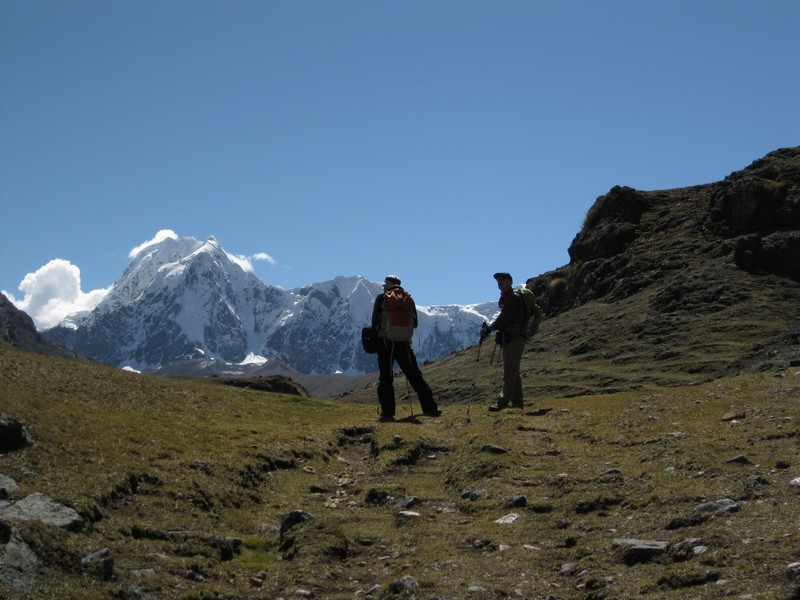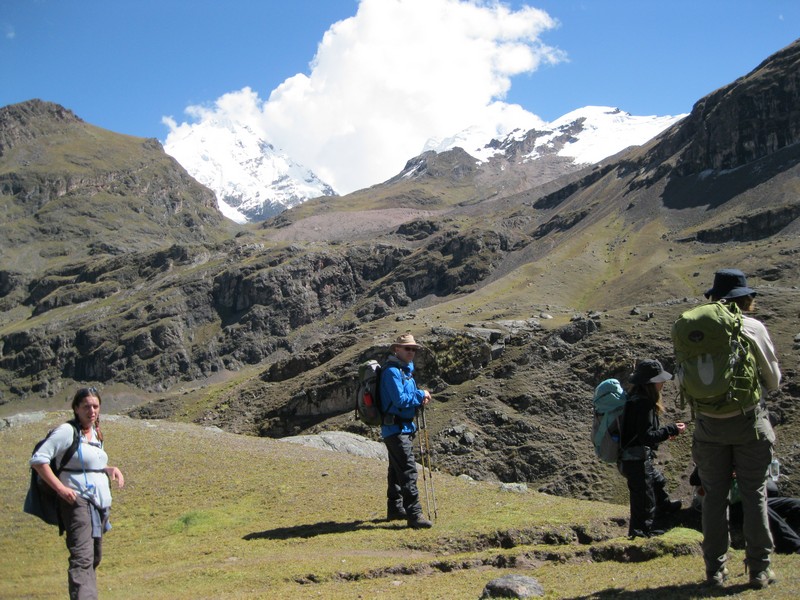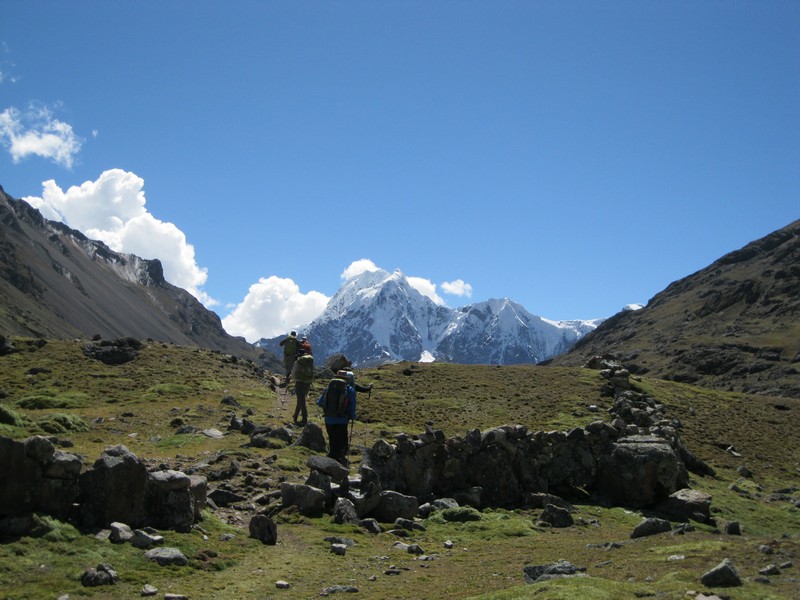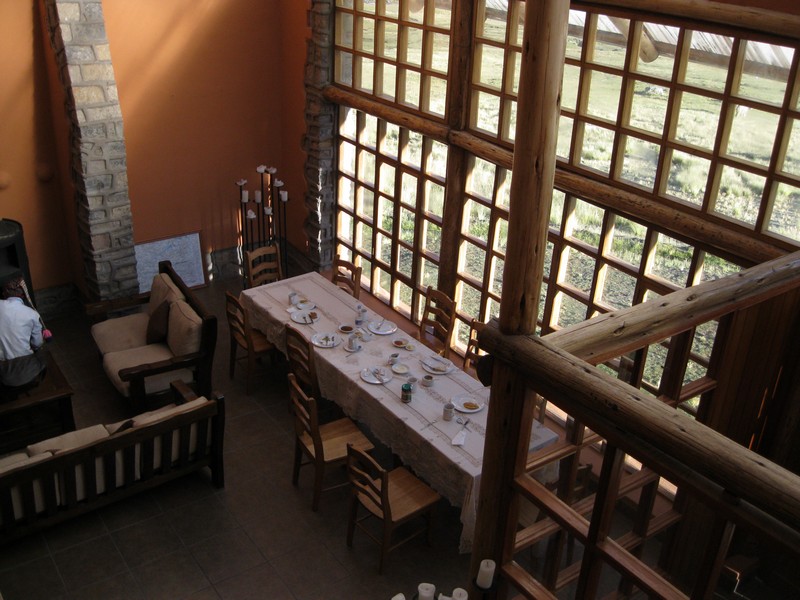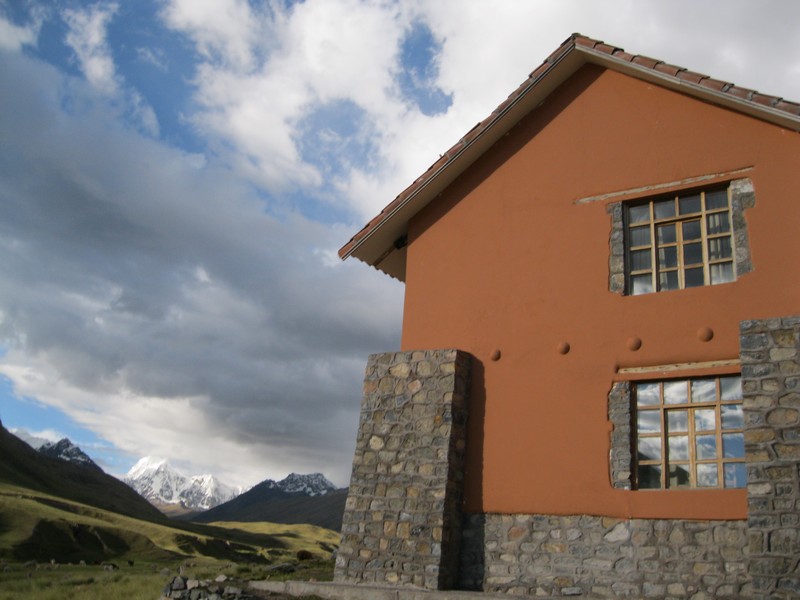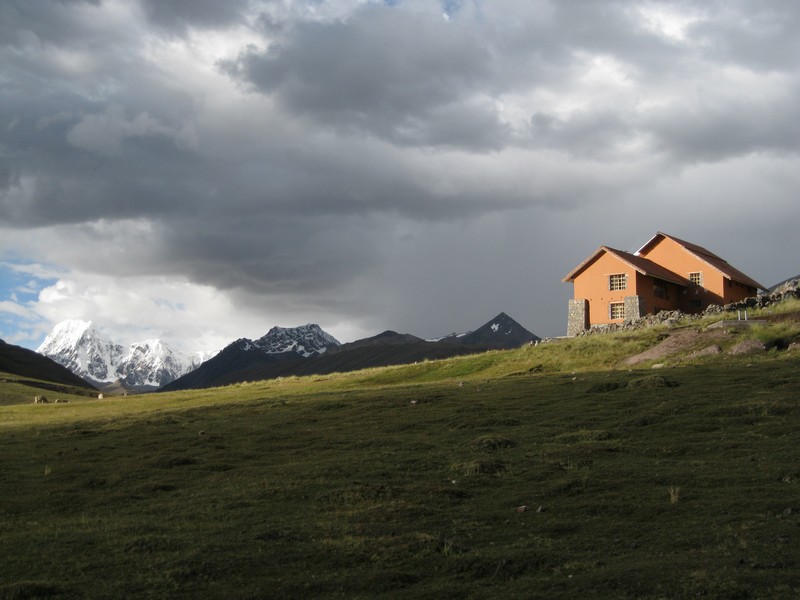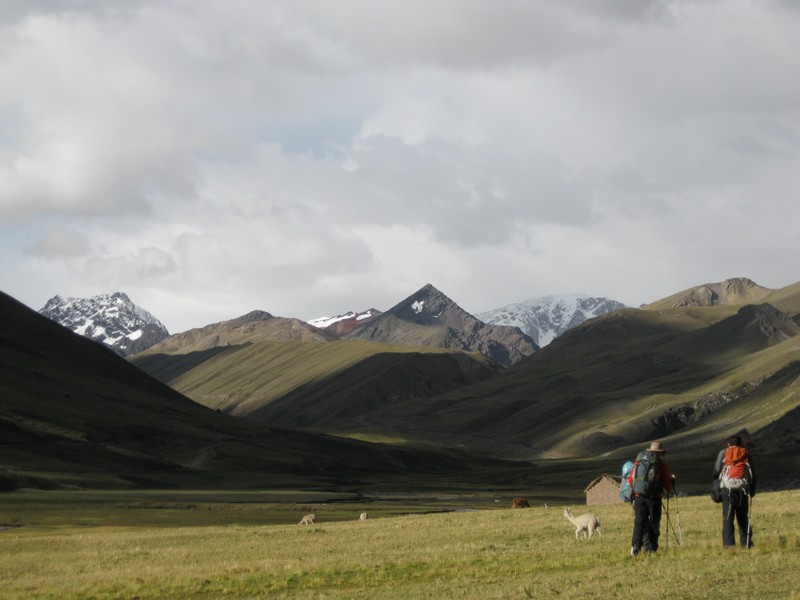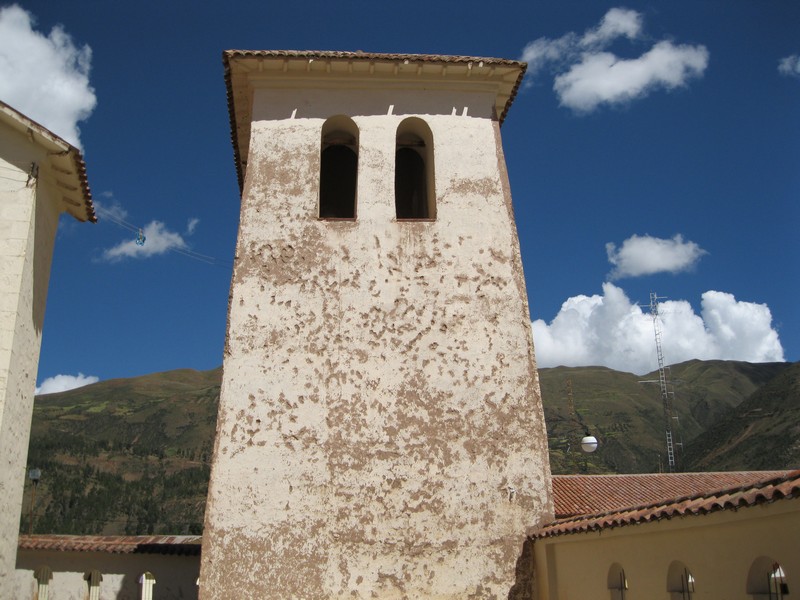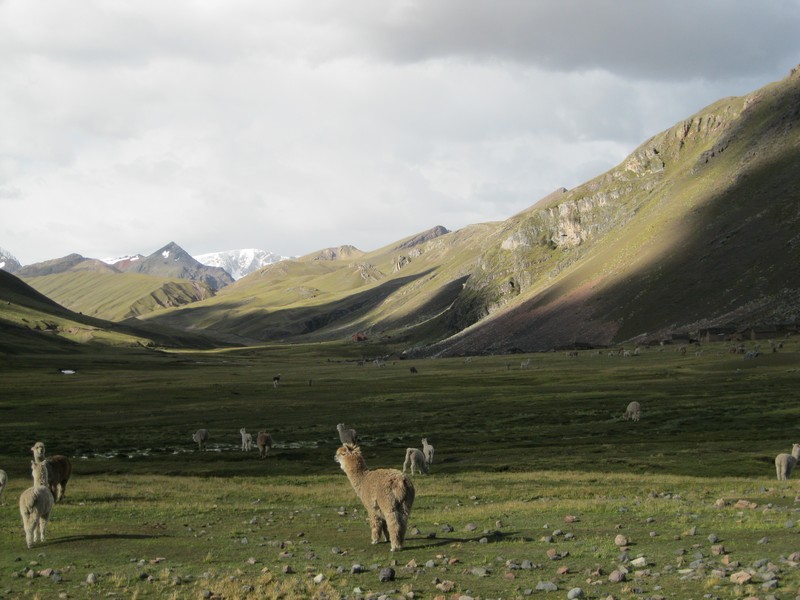While recently in the Cusco region, I took the opportunity to hike the lodge-to-lodge Ausangate trek. This is an incredible high altitude 5 day trek, staying overnight at authentic and comfortable mountain lodges. Walk along a miraculous trekking route that passes beneath the snow covered peak of Ausangate amidst other wonders. The Lodge-to-Lodge Ausangate Trek combines core Aracari values: authenticity, sustainability and adventure complemented by comfort and good taste.
Lodge-to-Lodge Ausangate Trek
Day 1: Cusco to Chillca Tambo (4,368 metres asl)
Distance: 3.3 km
Within about 20 minutes of being picked up from my hotel, it quickly became apparent to our group that the Ausangate lodge to lodge trek would be an out-of-the-ordinary experience. Our guide, Jeremy, jumped into the van where we had been waiting with a bag of coca leaves; “they’re fresh” he told us excitedly, going on to enthusiastically detail the small farm in the high rainforest, from where he had just arrived, and from where he had acquired the leaves. “We’ll need them for the walk” he continued with a wry smile that could not contain his glee. This was quite clearly a guide who was up for an adventure, and his sheer excitement at going to Ausangate with us certainly made us very much more excited about the prospect of what on earth lay ahead of us.
Jeremy would later explain why coca is sacred, why it has been such a vital plant to Andean communities for millennia, and how it is a mediator between man, the earth and the gods, but there was no time for that now. We drove out of Cusco on the road to Puno for a couple of hours, all the while hearing Jeremy’s detailed, animated and, at times jovial, insights into the Cusco region, everything from the population and the economy to the awful bout of pollution that dwells in Cusco’s rivers.
Our first stop was in the town of Checacupe to see the town’s beautiful church and a collection of exquisite murals. Jeremy explained about the different techniques of painting as well as their preservation over the years, as well as detailing the syncretism between native religion and Catholicism and how this was represented in the artwork. There was all manner of vibrant and compelling images, mixing the visage of Christ and the saints with rather more Peruvian and native imagery. Unfortunately their delicate nature meant that we could not take photos.
After a further 1 hour drive we arrived in a thickly forested area surrounded by hills, where a lunch of fresh asparagus salad was served. We then had time to relax in the wooded knoll before setting off on the final stretch in the van. On the drive, we stopped again only briefly beside a local farm where we were kindly gifted a bag full of hot potatoes fresh from the field. Tearing off their dirt-clod peels revealed the most delicious potato imaginable, and we happily devoured these before arriving at the final stop.
The first day of walking was straightforward, just a one hour stroll through a rocky gorge and onto a sweeping plain filled with llamas, but the peacefulness of the setting set the scene very nicely. To our left we caught the first glimpse of the community of Chillca.
At this point and over the coming days Jeremy explained perhaps the most admirable aspect of this experience; it was that same community, Chillca, who are partial proprietors of the four lodges that we would be staying at. All of the staff that we would encounter at the lodges hailed from the local community, with the exception only of the guide, the head cook and the chauffer who had driven us there. Most impressive of all for me was the great pride that the members of the community had in their lodges; the fact that they are so fully involved in this project gave them great confidence and dedication, and they strove to provide us with the most attentive service possible at each of the properties where we stayed. They excitedly welcomed us to the lodge and showed us around; they talked to us about how they had been built; and they attended to us as we relaxed in the cosy interior.
We shortly arrived at the first lodge, Chillca Tambo, on an elevated section overlooking Chillca and towards spectacular glacial mountains far up the valley ahead of us. The lodge itself was most authentic, and served as a warm and comfortable place to spend the night. Built from wood and stone and purposely designed to retain heat, the lodge was very warm on the interior, with a wood burning stove in the centre of the lodge in a central core with a comfy social area and with the bedrooms built around the outside on two floors.
The bedrooms were cosy in their own right, with soft beds, thick downy covers, a bedside table and amazing views. Not quite the luxury of other hotels in Aracari’s repertoire, but just what was required and desired on this trek, a comfortable place to spend the night in the mountains. We did have the luxury of a hot shower: although there is no electricity in the lodges, the water was heated also by wood burning stove. But in order to ensure that everyone had their fair share of water, we were allocated with only 2 minutes each. “This is not a ‘enjoy yourself’ shower” Jeremy told us jokingly, “but a ‘clean yourself’ shower”.
The soap and shampoo provided to us in itself was also a wonderful treat, 100% biodegradable, all made from ingredients sourced in Peru – Palm Oil from the jungle, Aloe Vera from the Sacred Valley, and Jojoba Oil from the coast to name but a few. The name of the producers is T’ika Soaps, their shop is up behind the Plaza San Blas in Cusco, and it is just great ….
As the sunlight slowly waned the staff hurried around the lodge to light candles perched in tall holders around the central social area, and along the corridors leading to the bedrooms. In the evening after a hearty dinner we had a display of local music from the local community, with an Andean harp and charango along with a girl singing. Their melancholic and omber tones accompanied by the flickering candlelight left our group deep in thought, as we eagerly anticipated what wonders we would see in the days ahead.
Day 2: Chillca Tambo (4,368 metres asl) to Machuracay Tambo (4,805 metres asl)
Distance: 14.9 km
High Point: Laguna Cochajasa (4,849 metres asl)
Freezing cold starts to the morning are an integral part of this adventure: jumping out of bed and quickly throwing on as many layers of clothes as possible as quickly as possible is soon refined to an art. We began early, at 7:30, gathered our gear and day packs, donned our walking boots and set off on the 14 kilometer trek up the valley towards the glacier. Up ahead of us stretched an infinite trail of llamas and alpacas, perhaps knowingly heading in the same direction where we were walking.
After an hour or so we caught our first glimpse of the protagonist of this trek, it’s powder snow covered peak peeking round the green hills to our right. And as we admired this incredible mountain the divine happened; just big enough to make out, a Condor glided right across the face of Ausangate, in pursuit of what I could only assume must have been very frightened smaller birds.
Now, I don’t use the word divine lightly; legend has it, as Jeremy explained, that the Condor delivers the message of man to the gods, or Apus. The most notable Apu, as any local will tell you , is Ausangate. In order to deliver the message to the gods man must be chewing on coca leaves, which derive their importance not only as a necessary stimulant for working at high altitude, but as the connector between the three Inca worlds. The water – the source of life – that comes from the mountains, runs through the high rainforest where the coca is grown, and eventually ends up on the coast.
The trek continued in a horseshoe around the top of the valley, with absolutely unreal mountain scenery on every side, and a commanding view all the way down to the first lodge, now a speck in the distance. The trail became much steeper, and more demanding, the surefooted llamas unwittingly mocking our efforts to master their terrain.
The breathtaking scenery into which we were now venturing is the most amazing thing that I have ever seen in my life, and something to which mere words and photos do not do justice.
We arrived at a sparkling blue Laguna Cochajasa, which I had learnt from previous experience it was probably not the best idea to swim in. We had lunch aside the lake, another fresh salad accompanied by delicious and by now somewhat essential coca tea.
By this point it had started to snow lightly, so we put on our rain gear before heading along the final trek to the second lodge, across a rocky moraine. The second lodge, Machuracay Tambo, was situated in a remarkable location, surrounded on all sides by high mountains, not least of all Ausangate itself, which towered above the lodge and disappeared into the clouds, so close that we could make out the detail of each individual ledge and ice shelf on this vertical face. We regressed to the lodge, which but for location was identical to the first lodge, for dinner, conversation around the fire, and sleep.
Day 3: Machuracay Tambo (4,805 metres asl) to Anatapata Tambo (4,700 metres asl)
Distance: 11.63 km
High Point: Palomani Pass (5,150 metres asl)
The day started in ceremonial fashion, as we partook in an offering to Apu Ausangate as ever with members of the local community. We were presented with the pelts of stillborn llamas (all cleaned up for us) inside which we stuffed coca leaves. These were then placed next to our accompanying herd of llamas and set alight. As well as a form of endearment to the present mountain god, the ceremony blessed the llamas who were our guides and luggage bearers, tagged the leading llama and ensured our safe passage along the route ahead.
Another tough day of trekking then began with a very demanding climb to the highest pass on the route, Palomani (5150 metres asl); Ausangate gleamed in the morning sunlight to our right. Although we saw no condors delivering our messages to the gods on this morning, we did see something of arguably equal grace. On the track ahead of us we spotted a wild Vicuña, the first time I have seen this nimble creature, which is much more athletic than its domesticated cameloid cousins the Alpaca and the llama. A few more appeared, and they watched us warily from afar. They did not allow us to get even close to them, effortlessly trotting along terrain that caused us to pour every ounce of energy into even the slightest step. They disappeared over the ever closer ridge ahead, and it was not long before we arrived at the pass.
It won’t surprise those who have read this far that the scenery here was just outstanding. A spectacular view of Ausangate, with peaks in every direction and valleys sinking far into the earth right beneath our feet. There was also snow at this level, and we took some opportune photos. Once again we spotted the family of Vicuña who were far ahead of us, this time seemingly gliding across the snow, and by this point much less interested in us. And I got a photo. Just.
After a rest and a snack we began the descent through an impossibly coloured landscape of burnt red hills, lush green swamps and deep blue pools. Along the way we passed by a spectacular glacial lake with deep powder blue water and high walls of icy black rock around the outside. Jeremy, with the opportune assistance of a Canadian geologist in our group, explained that this has resulted from the ancient movement of glaciers in the area. We stopped to rest in this peaceful environment of still air and strong sunshine.
The terrain once again was transforming, and we continued through undulated green fields of llamas punctuated with rock formations and past small inhabitancies, a vista which could not help but remind me of my dear home Scotland. By this time the sheer scale and volume of Ausangate, which now lay far behind us, became very clear.
As a mountain, Salkantay is absolutely beautiful and impressive, but not on this scale. Ausangate is Salkantay’s “big brother” Jeremy explained. It commands an immense and powerful presence; it is a mountain of simply massive volume, dramatically affecting the weather, the landscape and the whole environment around it. Not only that, but all of the white that we could see atop it was the source of water for the entire Cusco region. We repeatedly looked back to admire the Apu, all the while listening to Jeremy’s insight, and then turning to look back once again. As we arrived at the third lodge, Anatapata Tambo, the summit now in full view, we were left with little wonder as to why this enormous peak is still worshipped to this day.
We spent the evening relaxing in the lodge. At one stage I braved the bitter cold to pop outdoors and see the stars. Unfortunately the moon was almost full and it obscured the starlight, but instead I was treated to seeing the mysterious figure of Ausangate, shimmering white and silent in the light of the moon.
Day 4: Anatapata Tambo (4,700 metres asl) to Huampococha Tambo (4,818 metres asl)
Distance: 11.6 km
High Point: Yauricunca (4,980 metres asl)
Another steep and difficult climb to a high pass greeted us early on this morning, to HuasacochaCcasa (4,954 metres). From here the view to Ausangate was breathtaking. We then descended over a dusty red slope (which was something like what I would imagine the surface of Mars to be like) before walking across a plateau with sparkling lakes and with incredible view to mountains on all sides, back to still-visible Ausangate, and to ranges in the far distance towards Puno and Lake Titcaca.
It was becoming difficult to keep track of all the transformations in landscape, (and it is even more difficult to find adjectives that I have not already used in this blog article), but what we saw next was breathtaking, unreal, remarkable and spectacular, about the most bizarre sight on a trek of many incredible sights and landscapes.
The painted mountains are aptly named, with a spectrum of colours following the shape of the mountain in a linear pattern that looks like an artist has had his way with it. It is also possible to climb on top of the mountain, also known as Yauricunca (4980 metres asl), but I didn’t quite manage this today.
After taking the obligatory “look at me, I’m on a painted mountain” photos we continued through a landscape which was, well, just plain unbelievable, before arriving at the final lodge, Huampococha Tambo, a couple of hours later. This sat on a plateau tucked into a series of peaks, with view over a lake and to the backdrop of a distant mountain range. Ausangate was no longer visible, having disappeared behind the coloured mountains from where we had come. We settled down for our last night in the lodges, watched the dramatic orange sunset over the mountains and lake, and tucked into a pachamanca, an Andean style barbeque.
Day 5: Huampococha Tambo (4,818 metres asl) to Cusco
Distance: 10.51 km
High Point: HuampoCcasa (4818 metres asl)
Steep climbs early in the morning now a ritual, we hoisted ourselves up to the high point of HuampoCcasa (4818 metres asl) for one last look at Ausangate. By now it was far in the distance, but it’s presence remained incredible, a white mass of rock and ice commanding attention even in a landscape of rugged peaks and colourful slopes. We bade farewell to the Apu and began our journey back to Cusco, with a downhill walk through a lush green valley, alongside a river. As we descended, more and more settlements appeared, as the route took us past stone paddocks and houses. We were gradually coming back to civilisation after having visited something altogether wild and exuberant.
We arrived at a small village where community members awaited to give us a textile demonstration, an explanation of the different phases of spinning and dying the alpaca wool before mounting it onto a loom, a nice way to round off the trek with the chance to buy some handicrafts from the community. We enjoyed a final lunch beside the river before hoisting our luggage into the van and making the 3 hour journey back to Cusco, and back to relative reality.
The Verdict on the Ausangate Trek:
Five days; four comfortable community operated lodges; endless types of intense mountain scenery; divinity and spirituality entwined. This is an Aracari experience all over and we are proud to be able to offer this opportunity to our guests. Everyone physically able and up for an adventure should try to do this at some point in their lives!
Book the Ausanagte Lodge-to-Lodge Trek with Aracari
Contact us to speak to an expert travel planner for more information on Peru Treks or to book the lodge-to-lodge hike.

